About Ebykr
Ebykr celebrates classic and vintage lightweight bicycles through provoking imagery and opinion. Let's roll together!
About Ebykr
Ebykr celebrates classic and vintage lightweight bicycles through provoking imagery and opinion. Let's roll together!
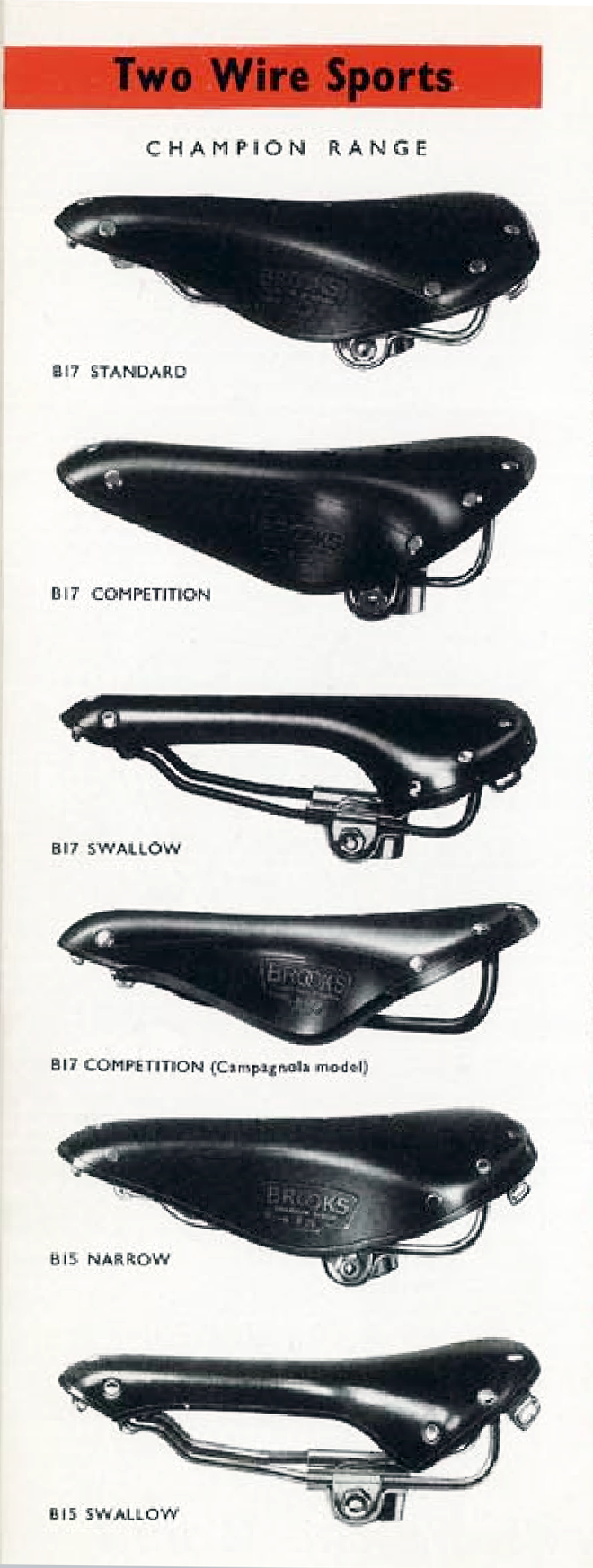
“Whilst not giving an extra guarantee beyond the legal terms, we emphasise the fact that Brooks Products are made throughout of the best material to be obtained, which, combined with experience and careful workmanship, and constant testing, is the best and safest guarantee that can be given.”
The Brooks Book for Cyclists (1907)

It’s official: the Brooks cannon is the most substantial body of work in all vintage cycling. Hands down. With hundreds of saddle models, bag models and other cycling accoutrements spanning 133 illustrious years, no other bicycle or component manufacturer operating under their original name comes close to having producing as many different “things” as Brooks has and hopefully will long into the future.
That many experienced cyclists will only allow Brooks saddles to touch their hind-quarters begins to reveal why the company’s products have been so popular over the years. Comfortable? Check. That many of the things Brooks produced last century or even the century before still remain in use today further tells the story of why the company’s products have been so popular over the years. Durable? Check.
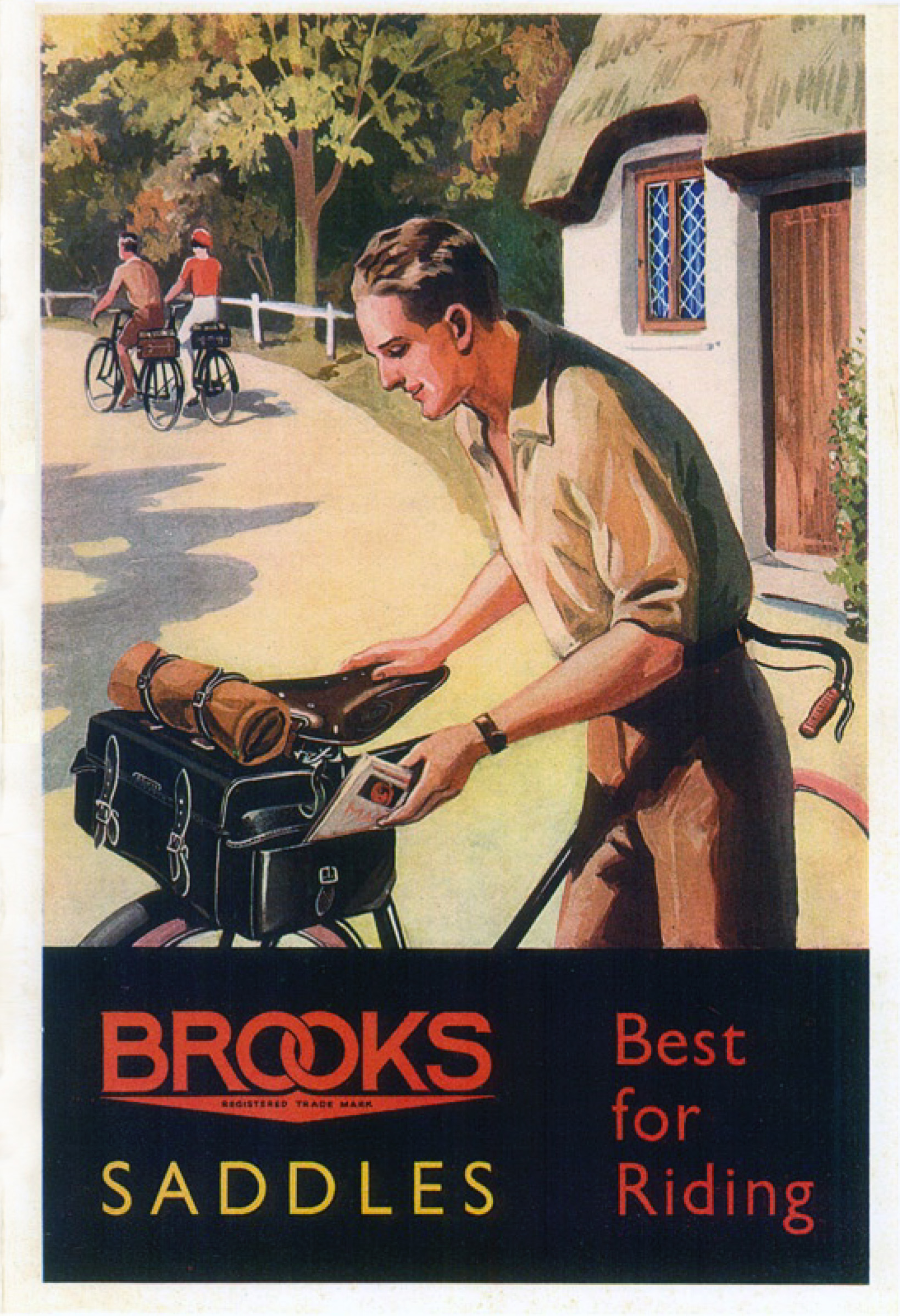
But it’s something altogether different that really separates Brooks from other manufacturers of cycling things. It’s a lot more difficult to describe than simple attributes like comfort and durability are. That’s because words don’t really do this concept, or philosophy, or worldview the same kind of justice that simply experiencing it does.
Sure, Brooks is the oldest continually operating saddle company in the world. But Brooks saddles and the Brooks brand are part of something much bigger than just bikes or bike seats. They are a cornerstone contributor to a larger belief system that upholds everything great about what cycling is — and what it does for us and for our surroundings. Indeed, how it helps define our place in the universe. Transcendent? Check.
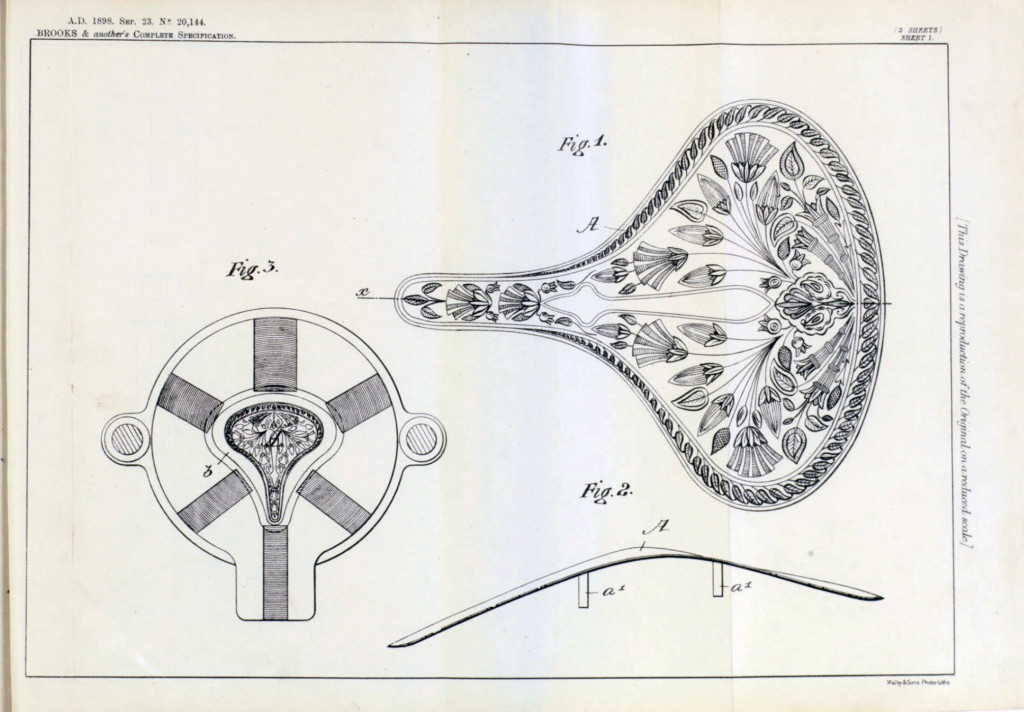
That’s because Brooks saddles evoke real and strong feelings when people touch or even think about them. Feelings of belonging to something larger than any one of us, of having the freedom to explore the wide world around us and of reconnecting with nature as the universe intended for us to do. Brooks is an enabler of the human condition, or at least amplifier thereof.
No, your hundred-year-old bike seat won’t be revealing the meaning of life anytime soon. (That’s a job best left to Monty Python’s troupe). But it will be a primary interface between you and your surroundings, helping reveal hidden facets of philosophy, history, art, sociology, psychology, biology and chemistry, just to name a few of the perspectives bicycles and their trustiest components like Brooks saddles invite exploration of.
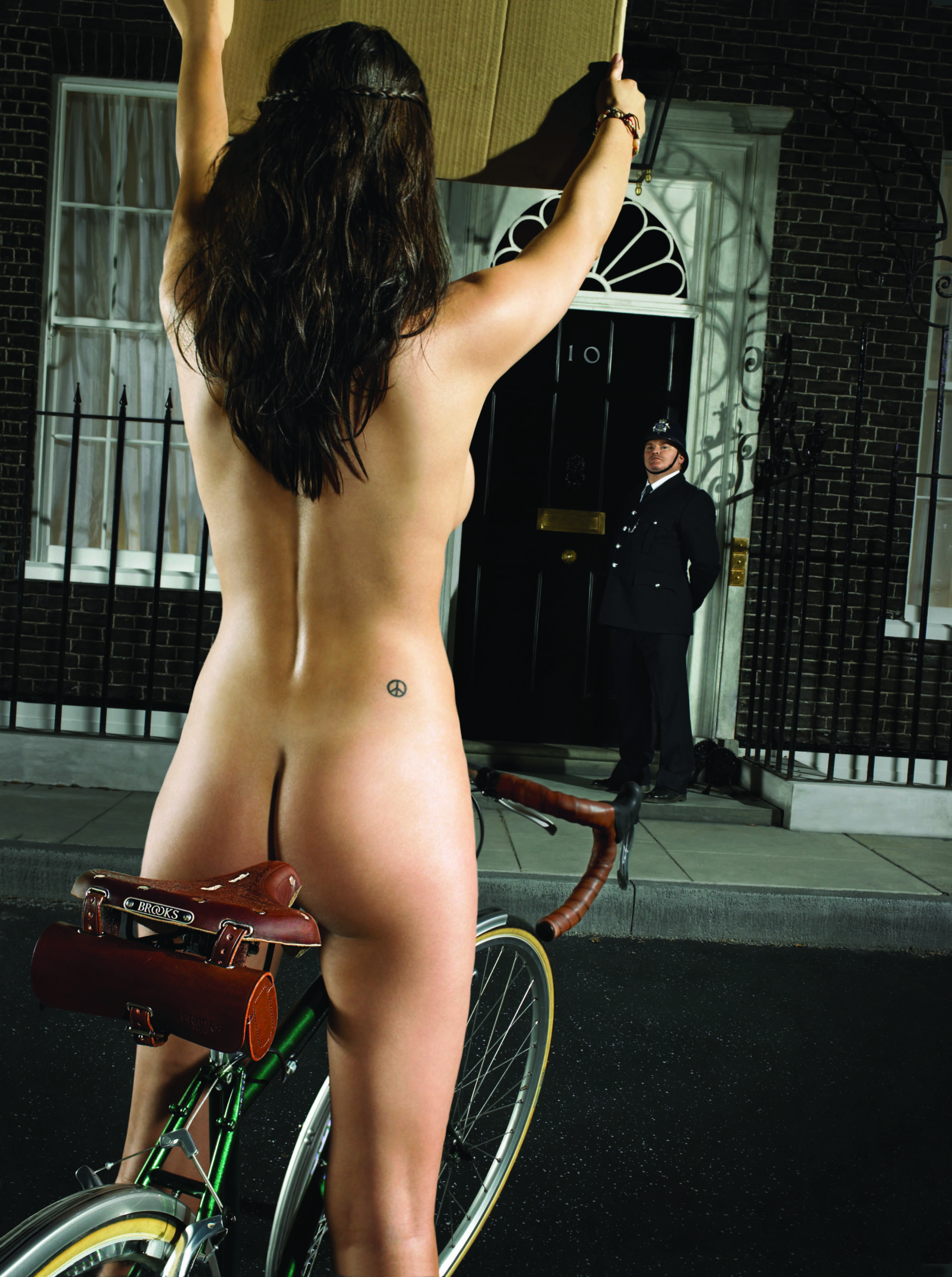
Brooks and those behind the company are cognizant of the special place the brand and its products hold in many people’s hearts, minds and souls. While it may be difficult to deny such an illustrious and well-documented past, the company nonetheless captures its historical zeitgeist in its current product line and marketing materials alike.
One place it does so — very well, if we might observe — is in Brooks product catalogs, or what have come to be known as The Brooks Book. The 2016 Book for Cyclists celebrates an unbroken tradition of manufacturing in the West Midlands area of England that dates back a full 150 years, to 1866. (Never mind the company made horse harnesses and general leather goods until the winter of 1882-1883).

It features the company’s wide saddle and bag range interspersed with historical insights, delightful stories and lovely watercolor illustrations. Except for a few indecipherable whiz-bang icons below some of the product descriptions and really high-res photos, it would be equally at home in 1866 as it is today.
Says Brooks themselves in the 2016 Book for Cyclists:
“The Book for Cyclists has been published in various forms since the 1880’s. It has been an invaluable reference point for us as a company, a testament to the ingenuity and flair for communication born forth from our halls throughout our history. Today, as we look forward to the newest golden era for the bicycle, we happily continue this proud tradition, contributing the latest chapter to a long company narrative.”
That long company narrative represents all phases of bicycle saddle evolution. Defines it, more like. From early models like the original B. 70 in 1890 — made to be mounted to the sloped backbone of high-wheel bicycles — all the way forward to today’s performance-oriented Cambium C. 13 — with its monocoque carbon frame keeping things to a feathery 259 grams — the historical family of Brooks saddles and accoutrements offers a wonderful reflection of cycling itself over the years.
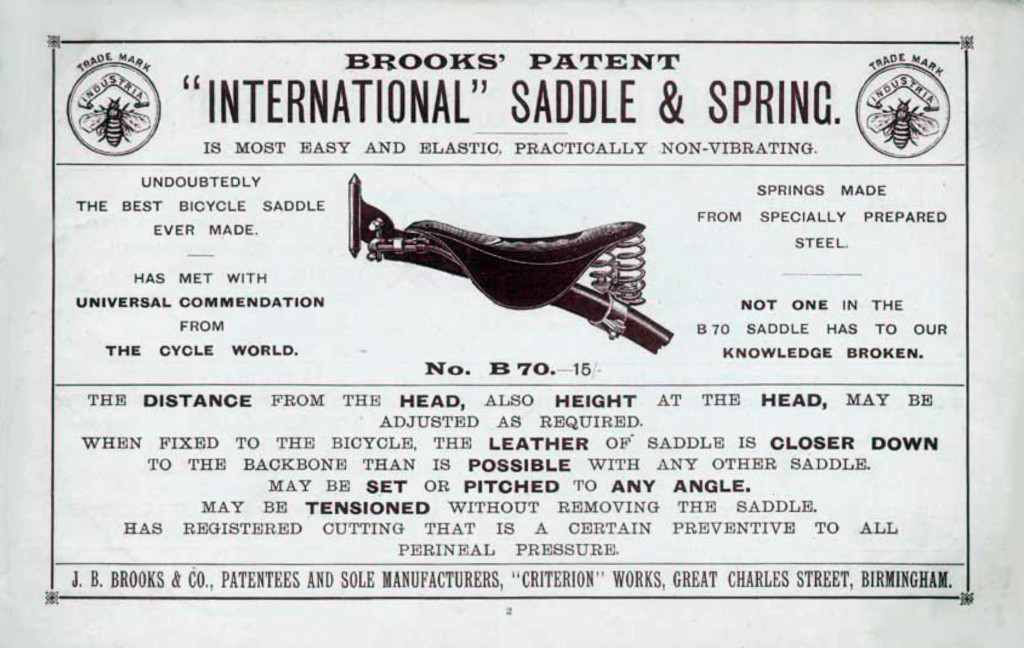
To call that family prolific would be an understatement. Brooks saddles embody just about every idea that has gone into bike saddles since the great Baron Karl von Drais first wobbled down that bumpy road in Mannheim two hundred years ago. Thankfully their zeal stopped at the pneumatic saddle craze that afflicted so many of their early contemporaries in the 1890s. Now, agonize over the thought of getting that kind of puncture when riding on those kind of roads.
The Brooks cannon would include all manner of saddle suspension systems, from vertical loop springs located front of the seat top’s nose to horizontal coil springs located rear of the nameplate to everything and anything in between. It would also include just about every chassis design used in bicycle saddles through present, not to mention chassis finishes or seat tops themselves. Tighten your toe straps, we have a lot of ground to cover.
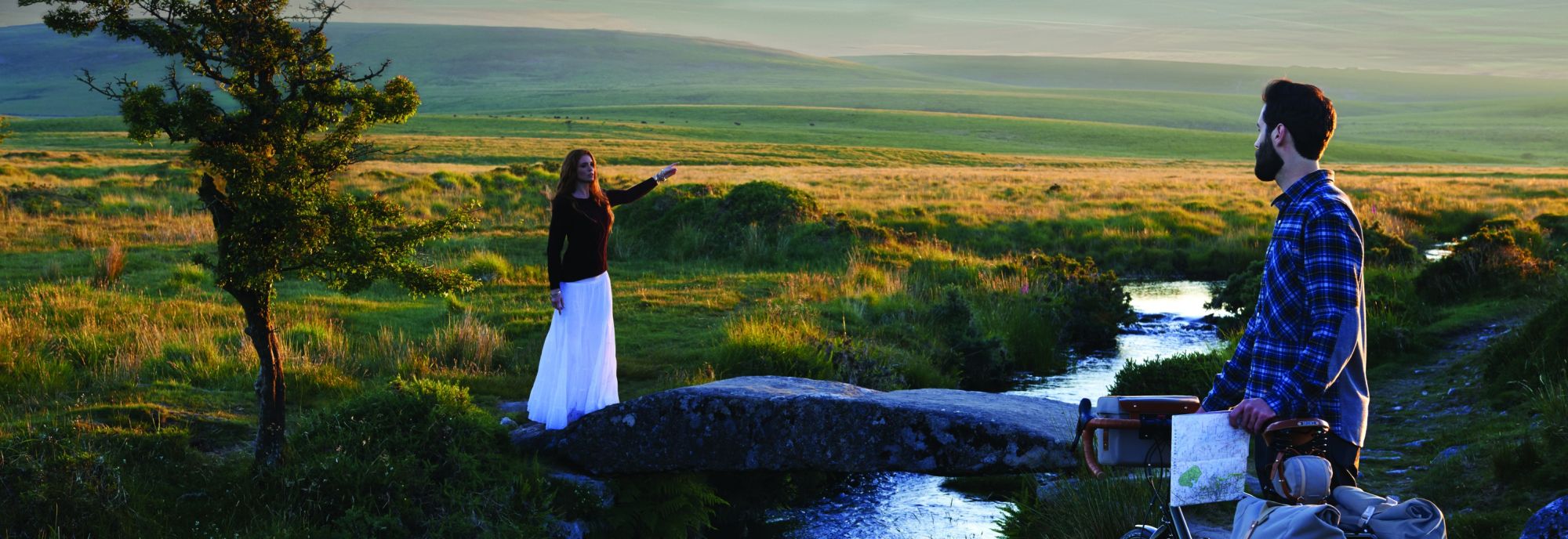
First, a quick primer on Brooks corporate history. John Boultbee Brooks founded his namesake company in 1866 in Birmingham, England to make horse harnesses and leather goods. After an oft-cited sequence of events between 1878 and 1882 where his horse died, he was unable to buy a new horse, he borrowed a friend’s bike to get to work and he disliked the saddle on that borrowed bike, the proverbial die was cast.
J.B. Brooks & Co Ltd. filed its first patent for a sprung bicycle saddle on October 28, 1882. To summarize greatly, things continued growing rather nicely (two devastating wars notwithstanding) until the 1950s, with Brooks by then employing 1,500 and producing 55,000 leather saddles and 25,000 mattress saddles each week — the most productive bicycle saddle manufacturer on earth at the time.
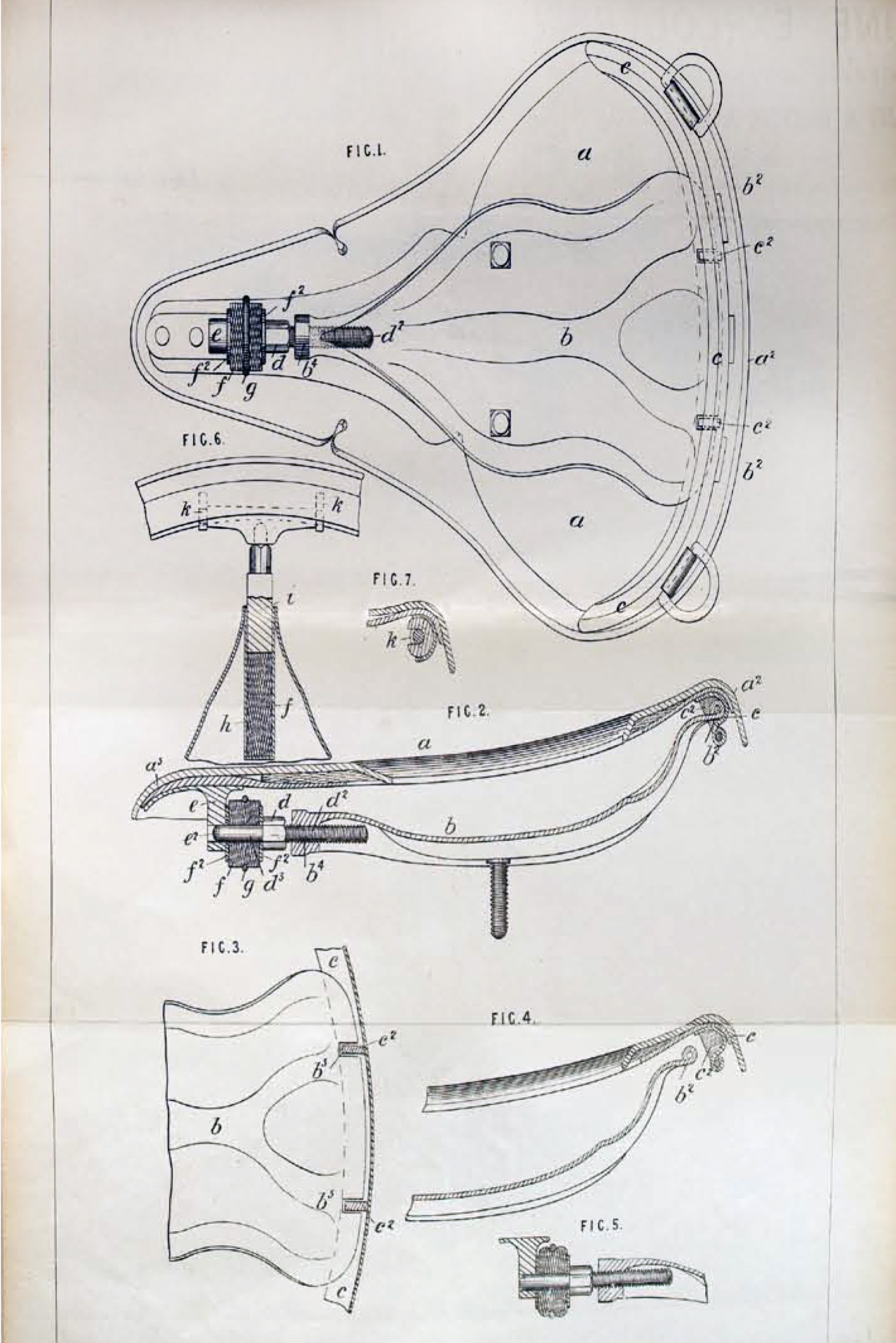
Several other bicycle saddle manufacturers were previously and subsequently absorbed into the Brooks corporate family. Included here were Lycett (1920s), The Leatheries Saddle Co. (1930s) and Wright Saddle Co. (1962). Contributions from the Wright product line would come to form an economy line at Brooks, most notably featuring the historical B. 15 range.
The Brooks family decided to step away from their core saddle business in 1958. They sold the saddle division of Brooks Industries Ltd. to Raleigh Cycle Company, which was itself then acquired by the British Tube Investment Group, or TI. TI owned Reynolds Tubing and Sturmey-Archer, maker of famous internal hub gears. The arrangement fizzled in 1999 when Raleigh/TI filed for bankruptcy and hung its subordinate Brooks/SA division out to dry.
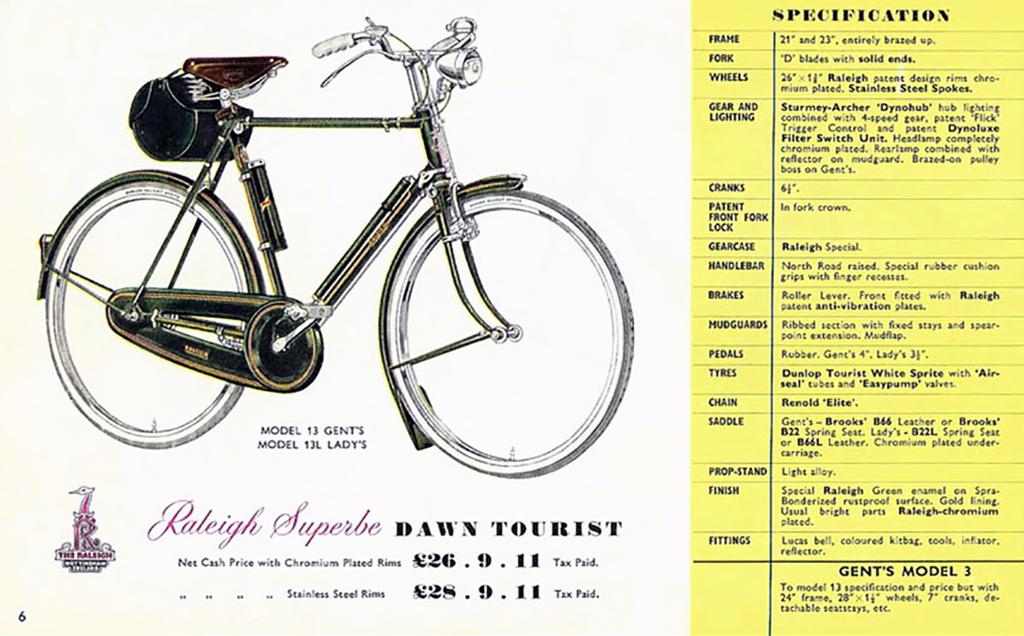
Investors John Godfrey Macnaughtan and Adrian Williams carried the company until 2002, when it was finally sold to the Italian saddle conglomerate, Selle Royal. Today, Brooks England Ltd. remains under the Selle Royal umbrella alongside other popular saddle brands like Fizik.
Selle Royal produces about 80,000 saddles each day, while Brooks now produces about 1,000 saddles each day. Among the 30+ countries Brooks saddles are distributed to, most go to Germany, Japan, U.S.A. and the U.K. Ride on, global brother and sisters, ride on.
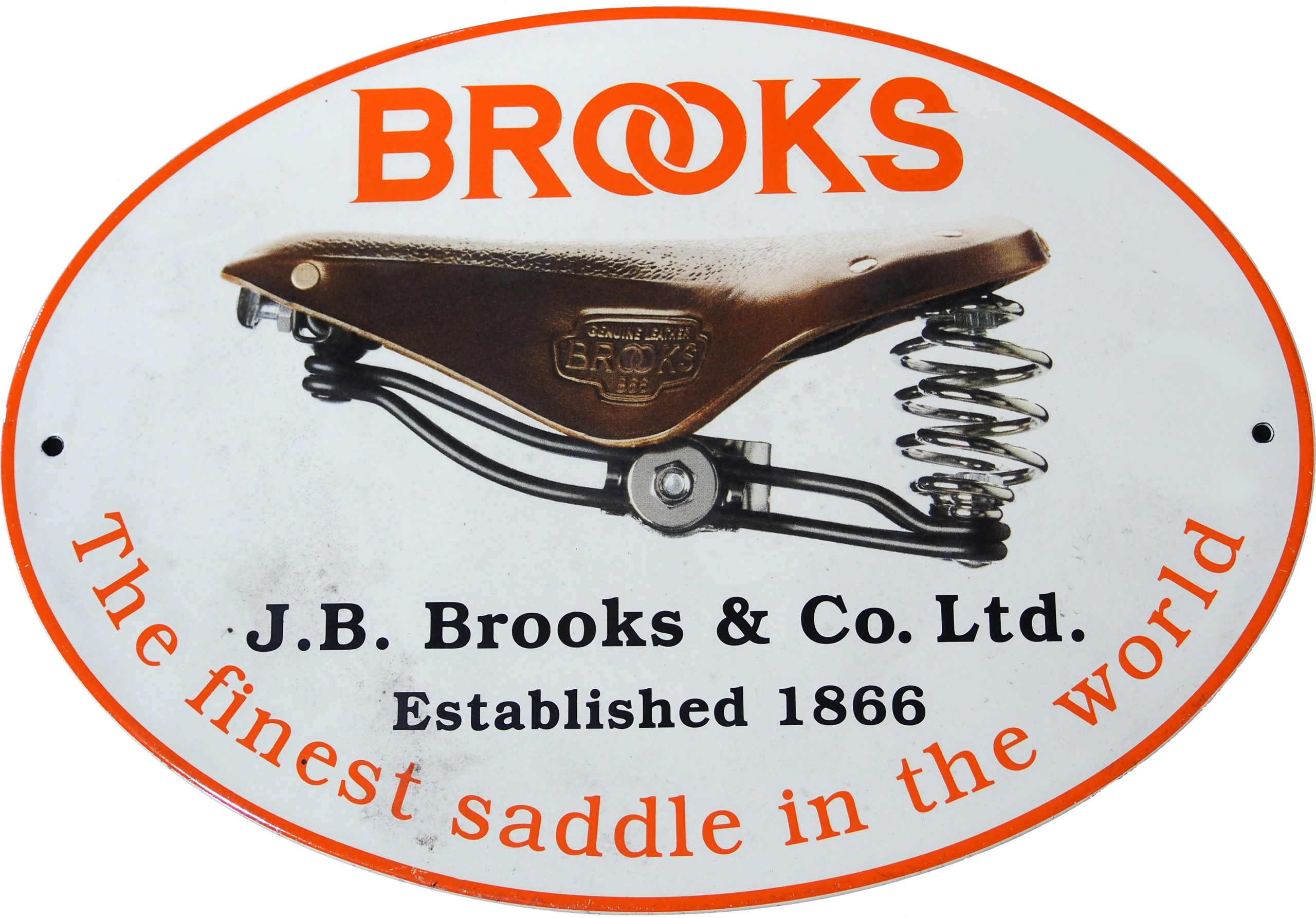
Bicycle saddle suspensions can be categorized into at least two different categories. Brooks saddles have featured both active suspension systems and passive suspension effects in their chassis and seat top designs since first appearing in the 1880s. As pointed out by Bill Laine at Wallingford Bicycle Parts, many Brooks saddles employed and employ the use of both active and passive suspensions in their designs.
A significant majority of saddles in the 1890 catalog have active suspension systems in the form of coil springs and loop springs in each front, rear and front/rear configurations. By comparison, a significant majority of saddles in the 2016 catalog have passive suspensions effects in the form of flexible chassis components and hammock-based seat covers. Brooks has been wise to ensure that today’s weight-conscious riders continue enjoying similar suspension benefits as yesterday’s comfort-conscious riders did.
Still, some twenty saddles with either coil or loop springs remain in modern Brooks catalogs, with loop springs taking a distant second to coil springs in order of availability despite their lighter weight and slimmer profile. Perhaps coil springs are just better at absorbing road shock given their horizontal orientation and larger size.
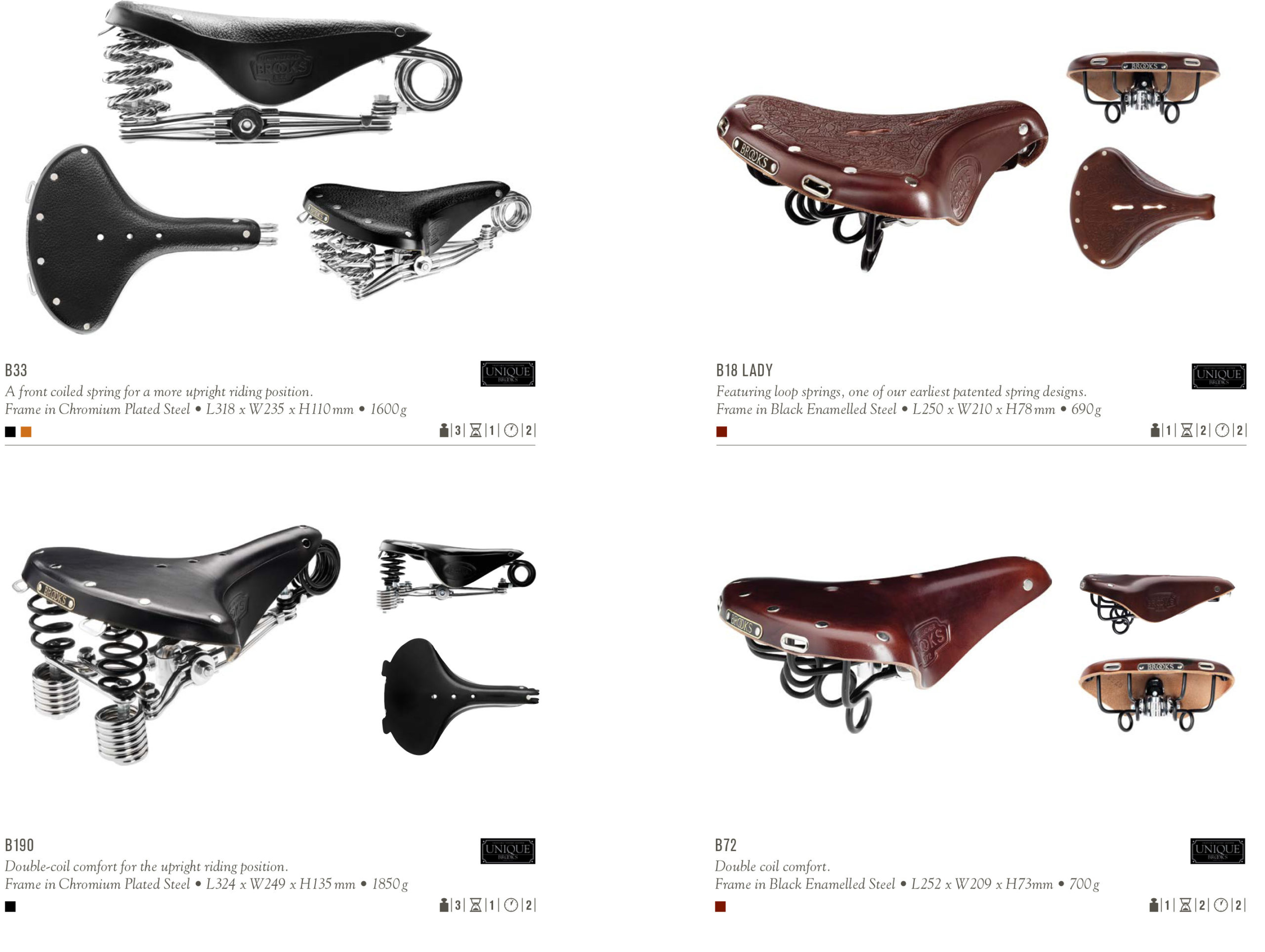
Then take the saddle chassis, which traditionally includes all of the bracketing, framing, railing and wiring on the underside of saddles. (For the purposes of this article, everything but the seat cover and active suspension system, if one is present). Brooks has employed four primary chassis designs since the 1880s, each of which has many secondary sub-designs falling within its primary design category.
Further complicating matters is the fact that many chassis sub-designs have been combined with other chassis sub-designs over the years, creating a perplexing matrix of combinations any math or seat geek would truly appreciate.
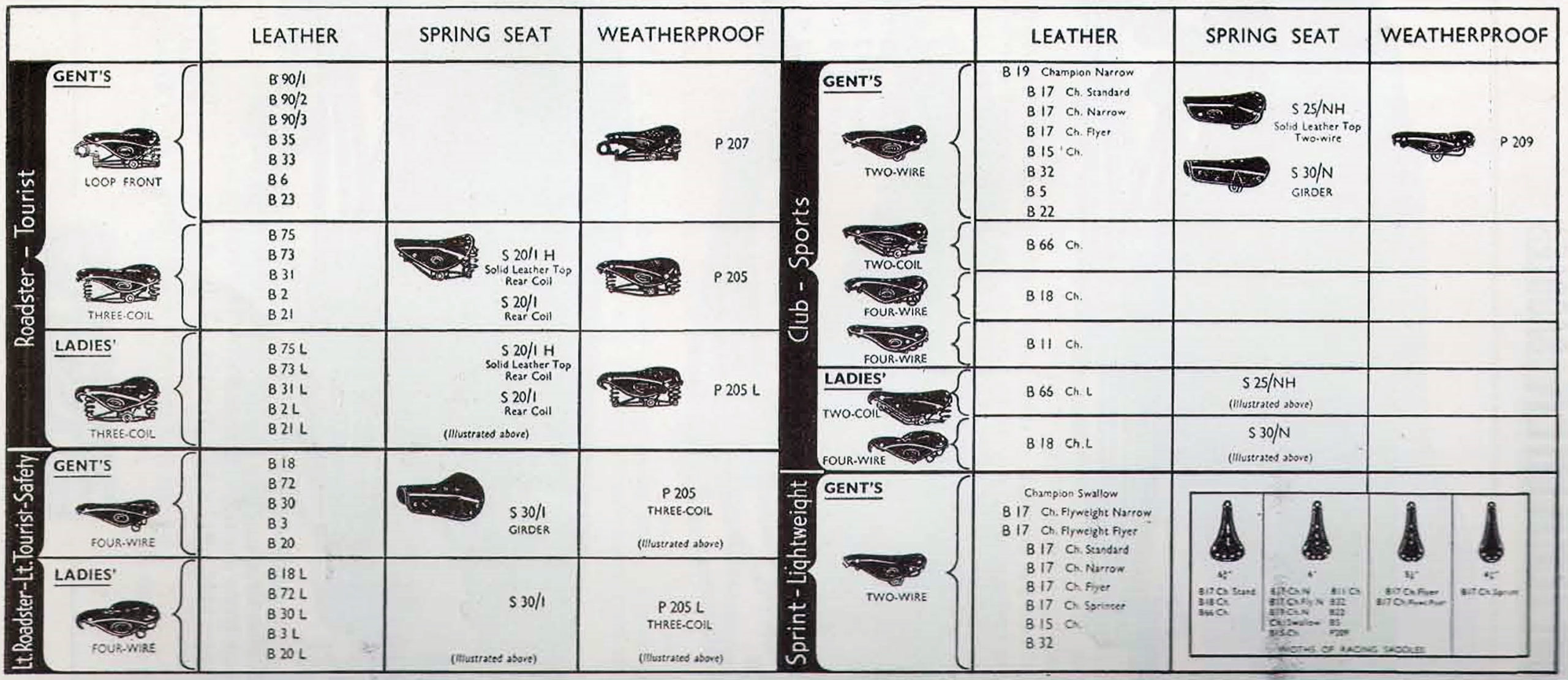
Included here are (our labels, not Brooks’): simple frames, truss-based frames, wires and rails, with rails remaining popular today. Simple frames are wider, usually flatter plates of metal that take the place of modern rails in one of several different ways. Truss-based frames are like simple frames but with internal support structures used to increase the strength and perhaps decrease the weight of the frame.
Wires are thinner gauge metal wiring always used in pairs, triplets or quadruplets on each bilateral side of the saddle since single wires are unable to support a rider’s weight. Which brings us to rails, which are essentially thicker wires able to support a rider using only one rail on each side of the saddle. Like on your bike, right now.
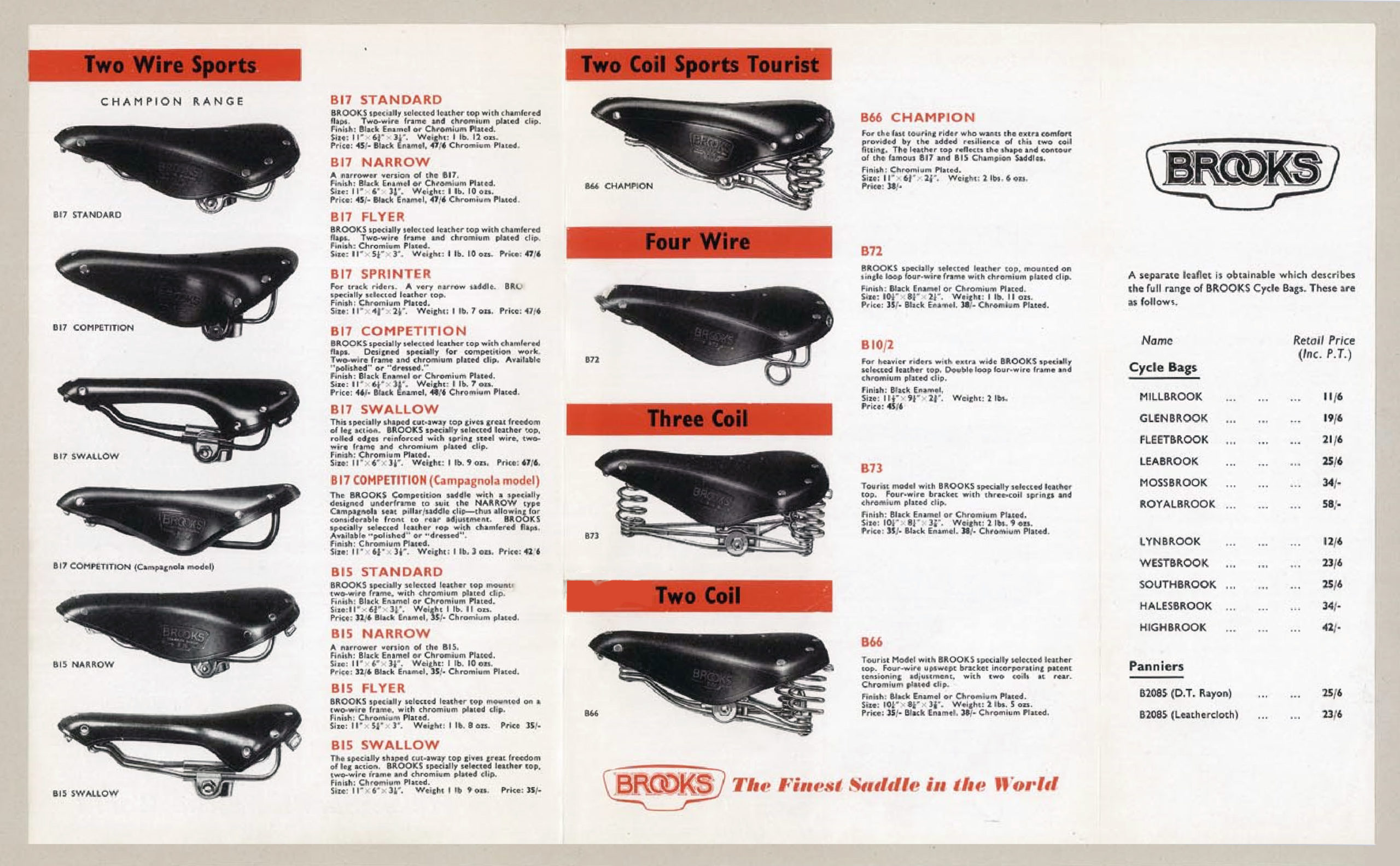
The Chassis Parts section of the 1937 Brooks catalog adds:
“Many types are produced, to suit the variety of purposes embraced by the one word cycling. There are light chassis for racing, stiff girder frames for heavy duty and multi-spring patterns for resilience or where bad roads abound.”
Simple frames, truss-based frames, wires and rails have all been used in different ways over the years. Simple frames change in appearance and size, truss-based frames have many different truss designs, wires have been used in myriad ways and even the humble, basic-seeming rail has gone from solid metal to tubular metal to solid carbon. And for their next act, Brooks will unveil tubular carbon rails — filled with helium, no doubt. (Or nitrogen?)
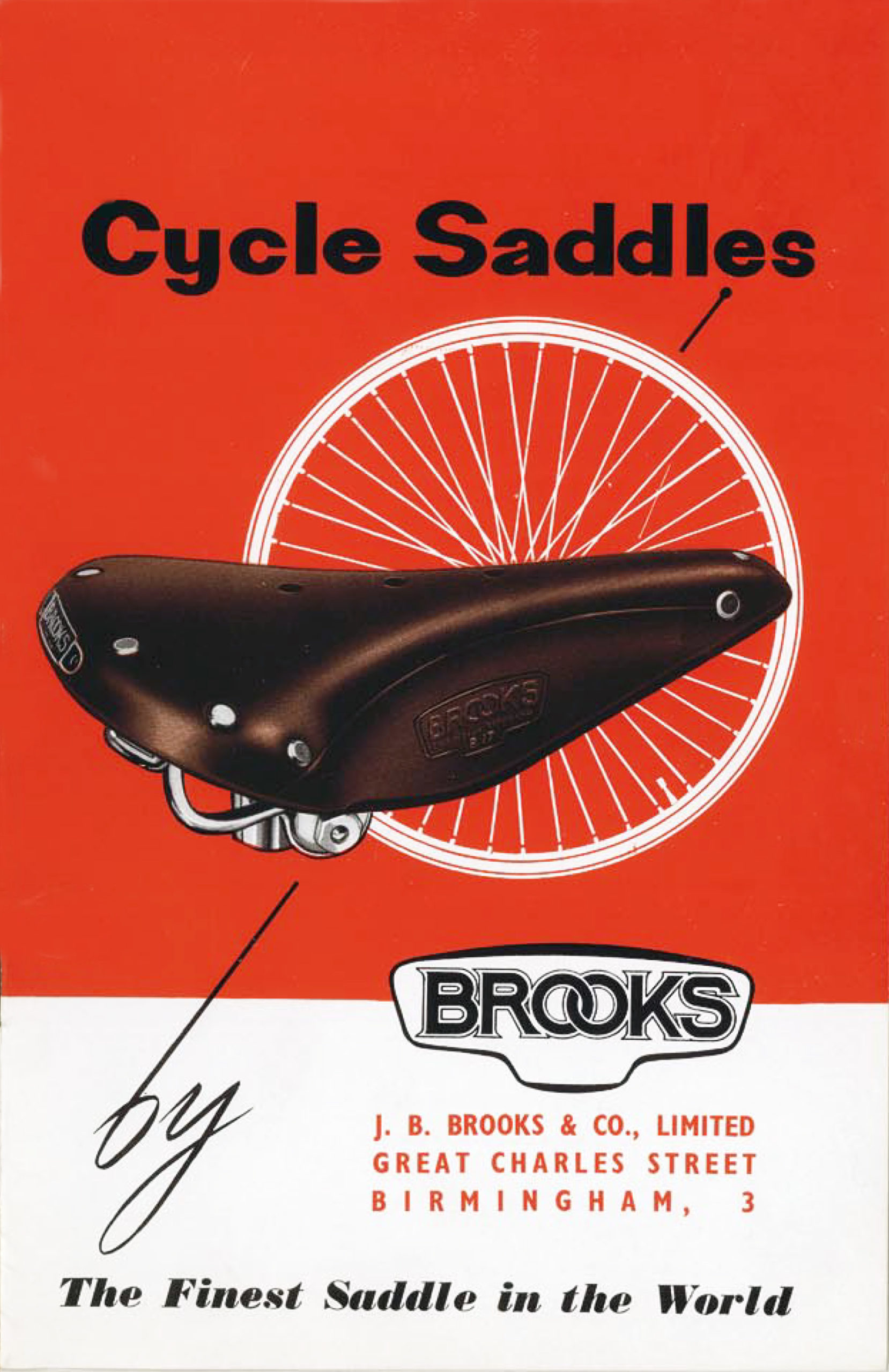
Chassis finishes have always been limited on Brooks and other quality bicycle saddles. Black enamel paint on steel was the only finish customers could get on the chassis of their Brooks saddles from 1883 through 1899. Optional nickel plated steel finishes were added to the entire saddle line in 1900, costing 15-20% more than their enamel counterparts. Chromium plated steel finishes joined the club sometime in the early to mid-twentieth century, with their first catalog appearance in 1937.
Distinct-looking copper plated steel chassis finishes followed on B. 17 Champion Special and Team Special models starting in 2005 and continuing through present. Brushed titanium finishes were introduced when titanium chassis came about in 2000 or so. And carbon doesn’t count as a real finish, at least not here, not now.
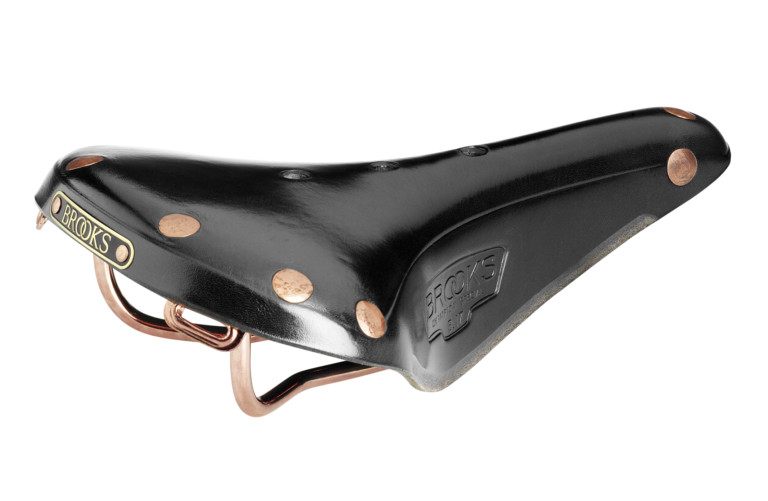
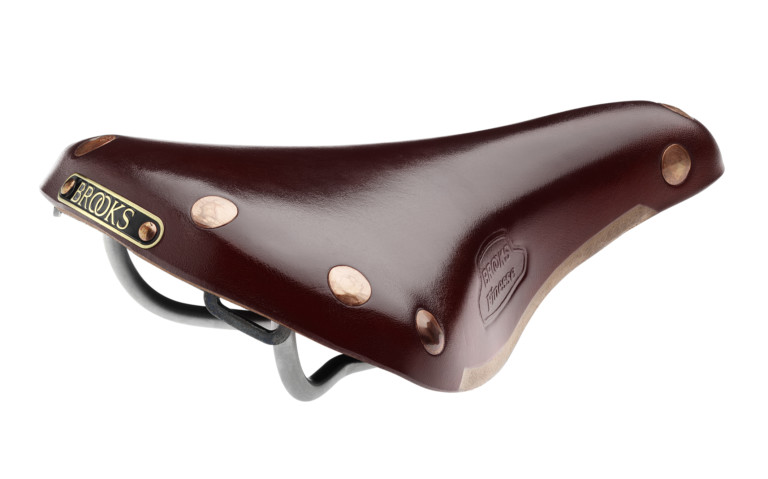
Here’s where things get really interesting. For a brief period starting in 1933, Brooks produced saddles that looked and functioned much like those popular but pricey Idéale duralumin saddles found on the fanciest mid-nineteenth century demi-course, randonneur and cyclotouriste bikes from France. Right down to using the French-sounding duralumin name in the Brooks Patent Duralumin Champion model found in its 1933 marketing materials:
“The association of a duralumin frame with a Brooks solid butt hide top brings to the lightweight enthusiast the most practical solution of the ultra light seat problem. In a saddle of this nature, the importance of a reliable leather top, capable of retaining its shape, cannot be overestimated. This model resembles the B. 17 Champion Narrow, and is strongly recommended for the clubman’s use.”
1933 Brooks Saddles & Riding Kit
The Brooks Patent Duralumin Champion joined another duralumin model that year with another mouthful of a name: the Brooks Supplex S. 30 Duralumin Extra Narrow. Unlike its sportier cousin, The Champ — with its racing pedigree — the Supplex Duralumin Extra Narrow was a spring mattress saddle for fast road riding. (Yes, this was already becoming code-talk for slow road riding, judging by the saddles falling under this catalog header). Brooks suggests it was designed for, “lightweight roadster riders who prefer resilience in the seat itself.” Sounds about right, doesn’t it?
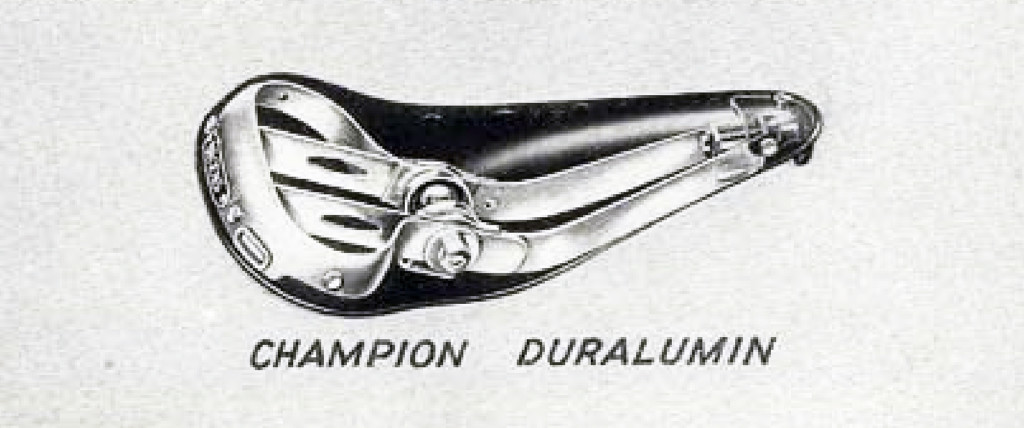
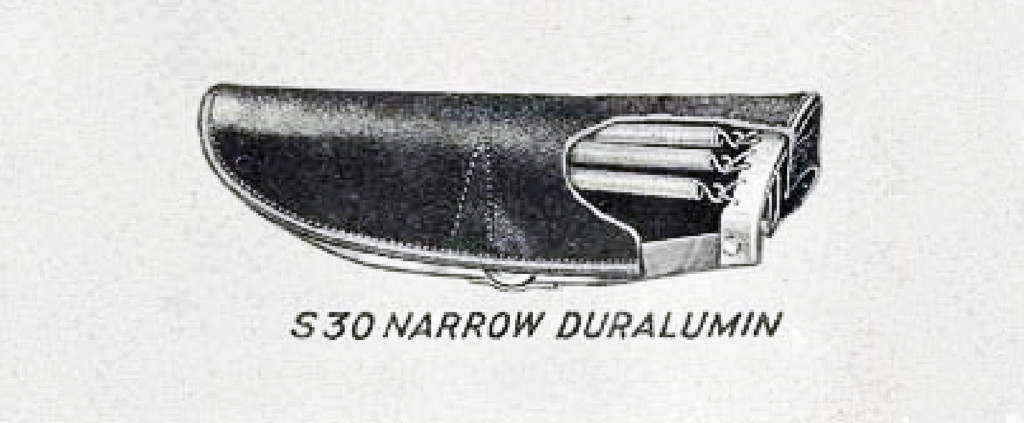
By the following year, two important changes had been made to the only full-aluminum chassis models ever sold by Brooks. First, use of the duralumin name was dropped in favor of the more Anglican-sounding (and trademark-free) castalumin name. Second, what had been two new duralumin saddle models became two newer yet castalumin saddle models.
The B. 16 Champion Patent Castalumin Frame featured an intriguing “shock absorbing nose shackle” to provide “semi-automatic seat tensioning.” One wonders why on this saddle and not on other concurrent saddles with more traditional Brooks frames. Does steel absorb shock noticeably better than aluminum in saddles, too?
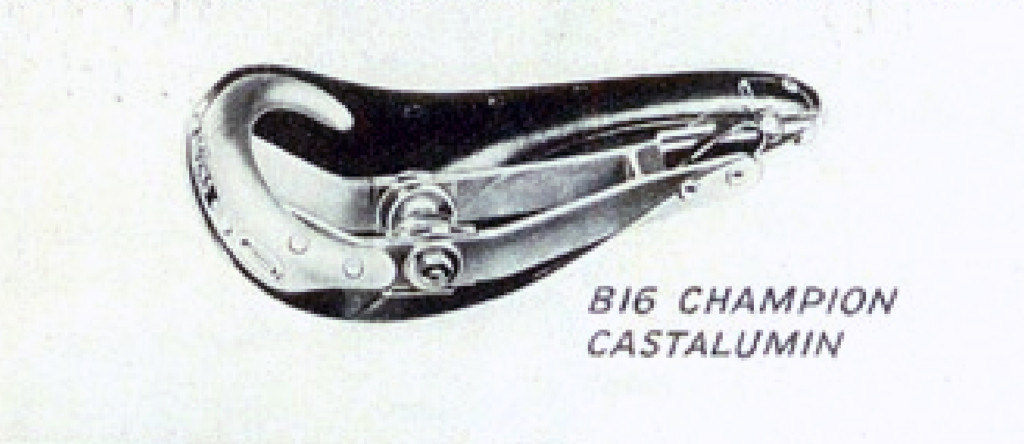
One also wonders why Brooks sought to rectify loose seat tension with shock absorbing nose shackles. Seems rather incongruous on first thought, not to mention a marketing miss. Maybe that’s why the technology was termed a “shock absorbing rubber buffer” by the 1935 catalog, despite its initial introduction as such on the B. 185 motor saddle a full decade earlier.
The other new castalumin model was the Brooks Supplex S. 40/N Patent Castalumin Frame. Weighing a spry 10 ounces more than the racier B. 16 Castalumin, the S. 40 Castalumin included a generous spring mattress top and “stout” black weatherproof covering underlined with molded leather and felt. It was mounted on an “ingenious” die-cast alloy frame where the mattress springs were hooked to a steel frame cast into the backplate. Take that, Idéale!
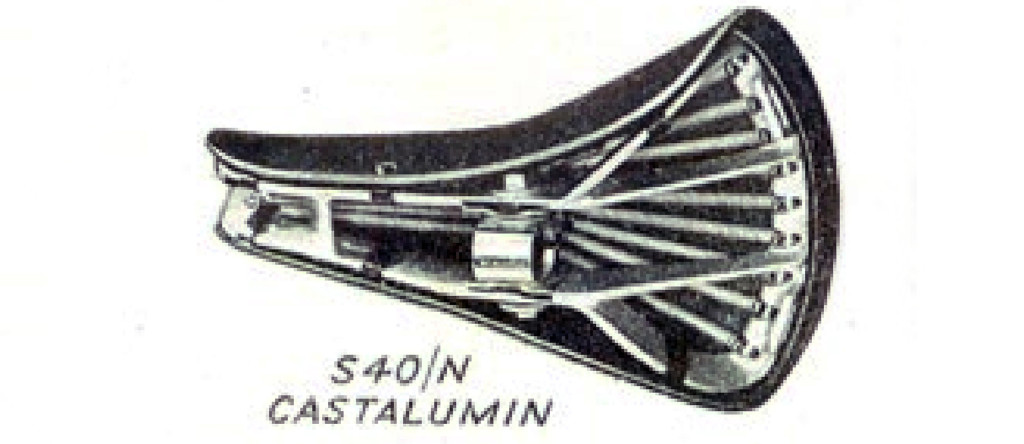
The combined use of aluminum alloy and steel on the S. 40 Castalumin chassis would be a sign of things to come. While the full-aluminum chassis trail goes cold in 1936, new hybrid aluminum alloy/steel chassis designs were introduced just two years later. Idéale never produced hybrid saddle chassis despite selling full-aluminum models for another fifty years.
Hybrid chassis were next found on the B. 17 Champion Flyweight Narrow and B. 17 Champion Flyweight Flyer, which at one pound, two ounces was the lightest saddle introduced by Brooks through 1938. (The Flyweight Narrow was 3/4″ wider and weighed one ounce more). Both of these very special B. 17 models featured chrome plated steel rails mounted to an aluminum alloy cantle plate. The B. 17 Flyweights remained in production for two years prior to England’s involvement in World War Two.
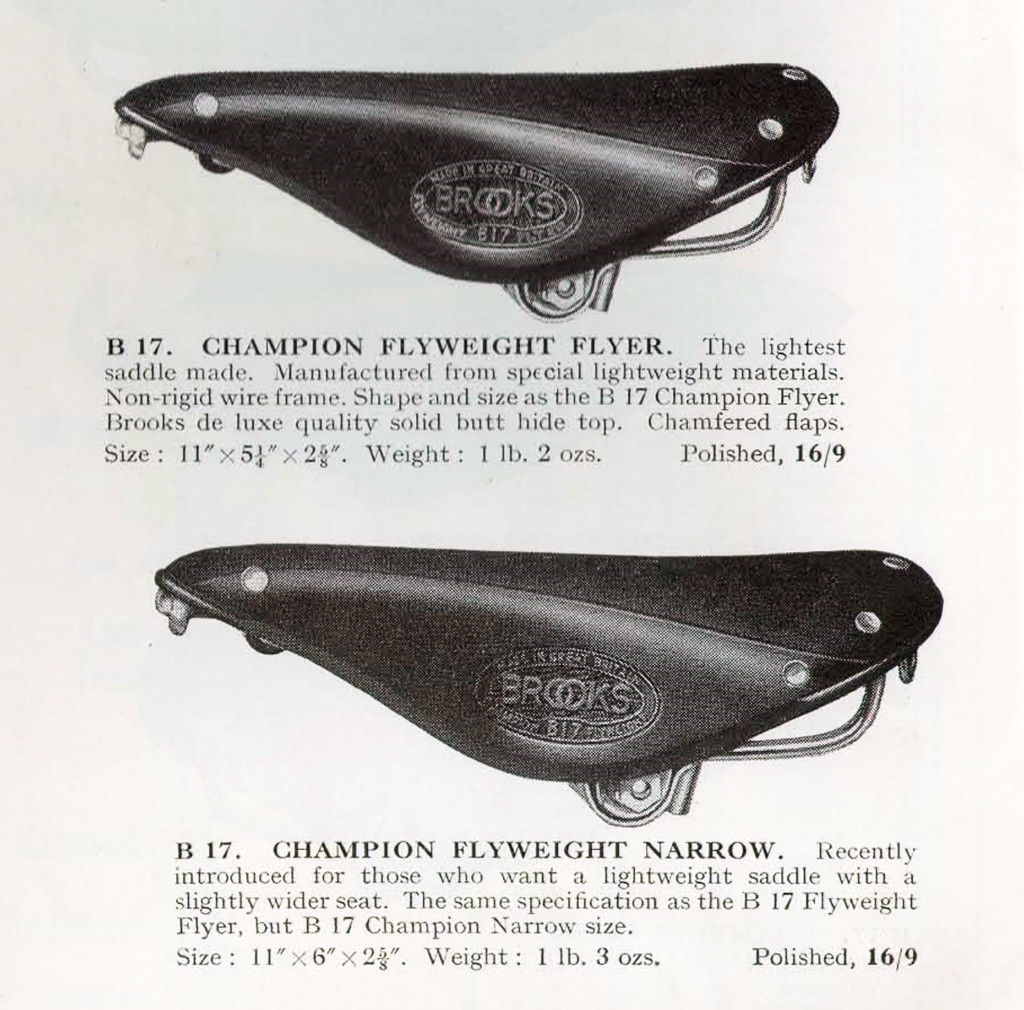
The last hybrid aluminum alloy/steel chassis saddles made by Brooks included the B. 27, B. 37, B. 47 and B. 57 models. Introduced in 1948, these saddles featured steel rails mounted to a heat-treated, light aluminum alloy cantle plate . Stainless steel was used to manufacture these rails, for “strength and controlled resilience.” The B. 27, B. 37, B. 47 and B. 57 were offered for three or four years. And that’s where the Brooks aluminum chassis trail ends altogether.
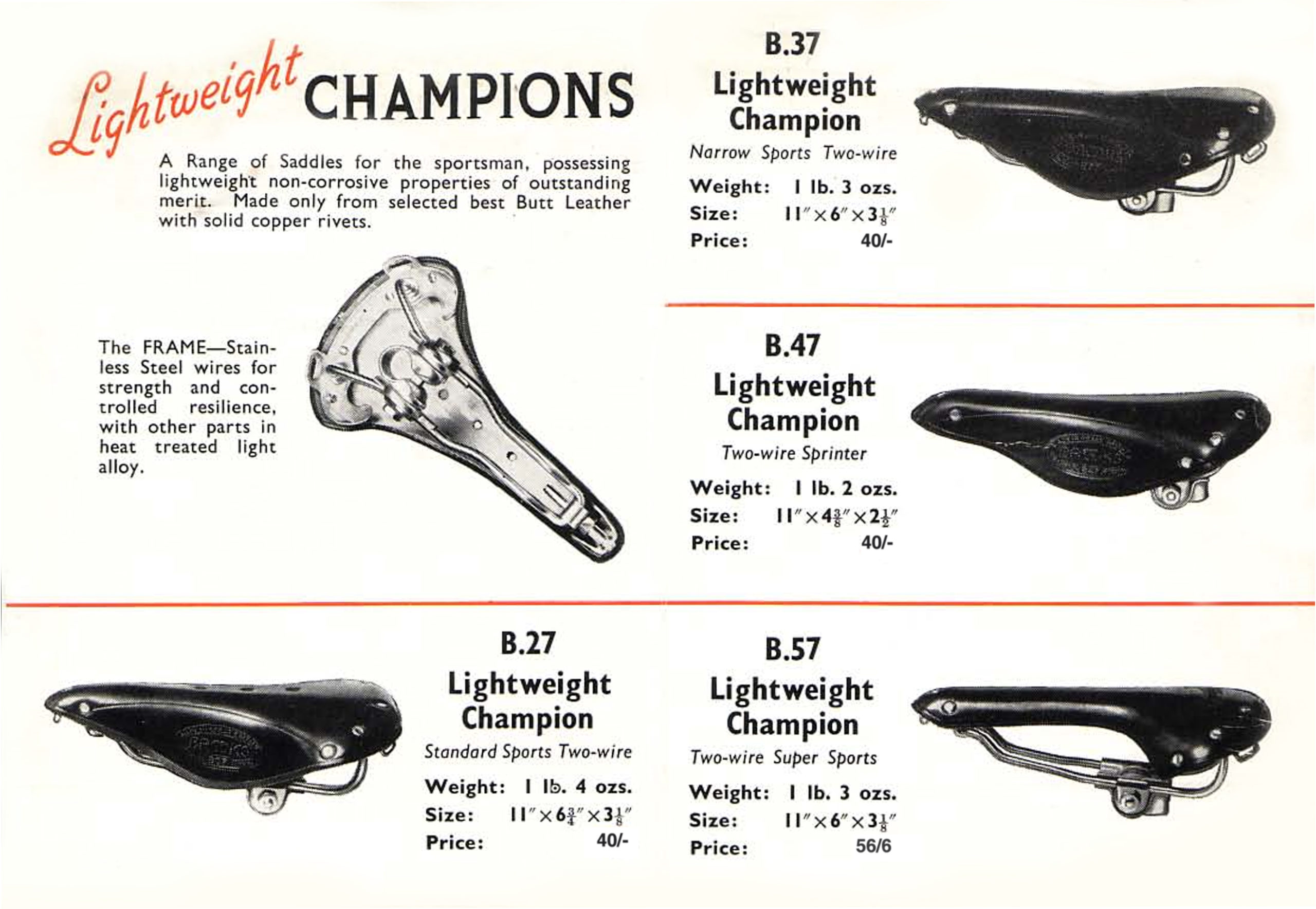
Brooks seat top choices were somewhat limited in color until more recently. You had your pick of black, brown or light colored leather. Additional leather colors started becoming available as leather dyes and dying techniques were refined, with venerable models like the B. 17 loosening up since first being introduced in 1896 to now include a veritable rainbow of colors: Black, Brown, Honey/Light, Natural, Green, Blue, Red and Ochre, of course. Maybe that’s why the timeless B. 17 is the most popular Brooks saddle in the company’s Classic range.
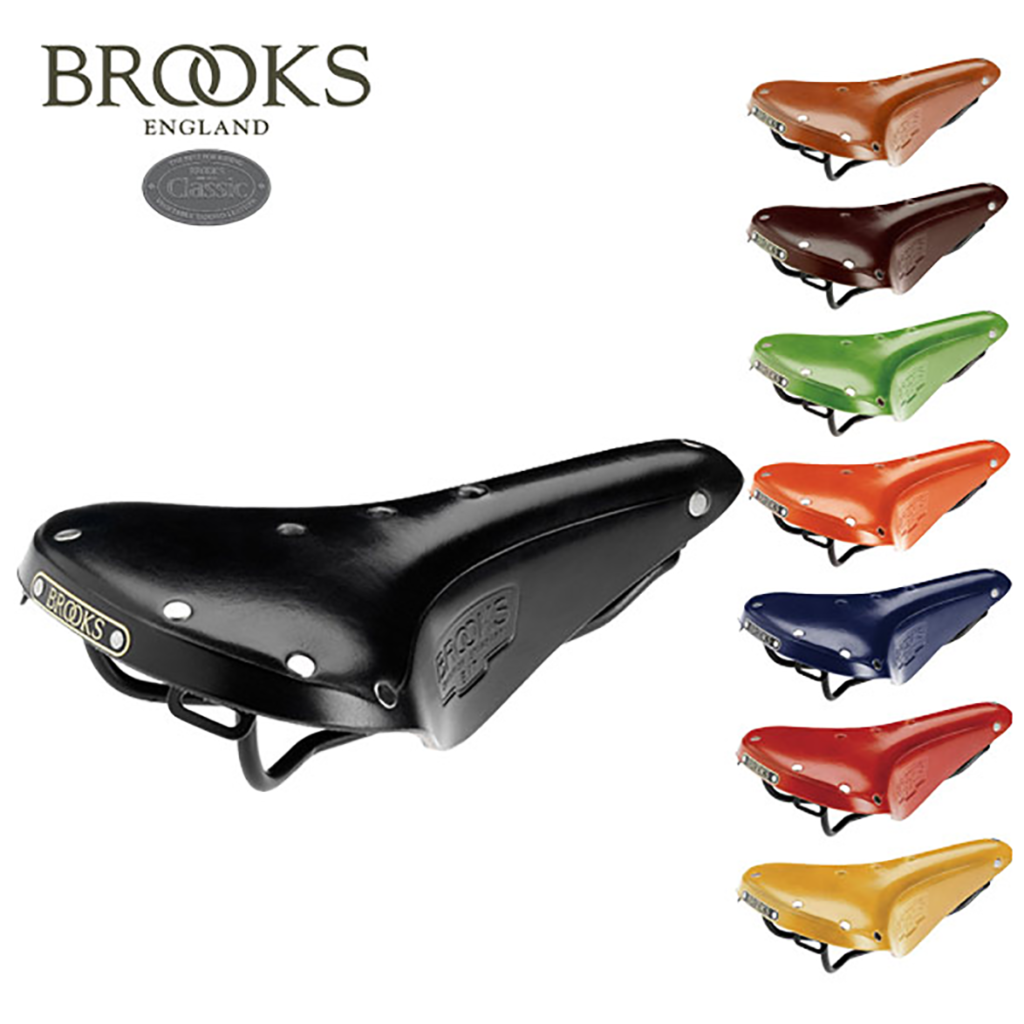
While a broad array of seat top colors may not have been available until recently, Brooks seat tops have always come in different shapes and sizes. Good thing, too, because different kinds of people use different kinds of bikes to do different kinds of things. The smart people at Brooks picked up on this straight away and started catering to all manner of cyclists from day one.
Indeed, the inaugural 1890 catalog had twenty-seven saddle models catering to racing, semi-racing, long distance and spring riders, not to mention three ladies saddles and a peculiar “Climax” saddle presumably meant for all adults to enjoy. (Strange it wasn’t a tandem-only model given how conservative Victorian values were). And so the groundwork was laid for what would become the most exhaustive body of work in cycling history. Anyone have a smoke?
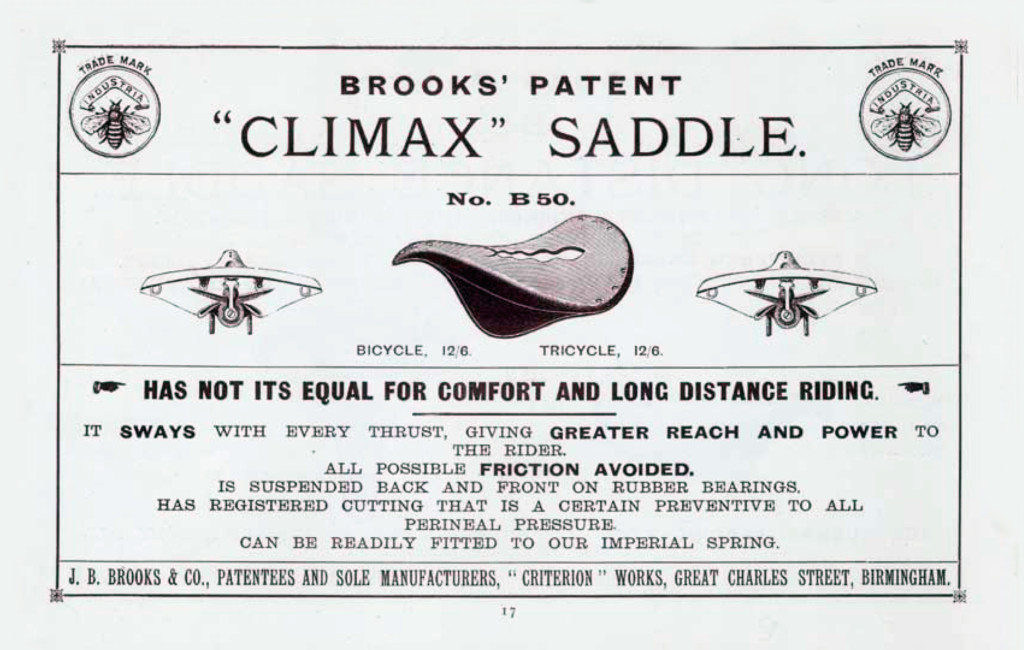
The leather-as-seat-top monopolists reigned supreme at Brooks (mostly, see below) until 2013, when the company finally introduced the C. 17, first of the Cambium line that now includes the C. 13, C. 15, C. 17 and C. 19 models, and sub-variations thereof. Made of vulcanized natural rubber and fitted with a stretched organic cotton canvas (or denim) top, the Cambium line is light, modern and undeniably Brooks.
It very much looks the part of a smart update to the traditional company line-up: sturdy but sleek chassis, classic hammock construction, comfortable but competitive top. And it has replaceable rivets holding everything together, including the requisite Brooks nameplate. The future of cycling has arrived and it is now.
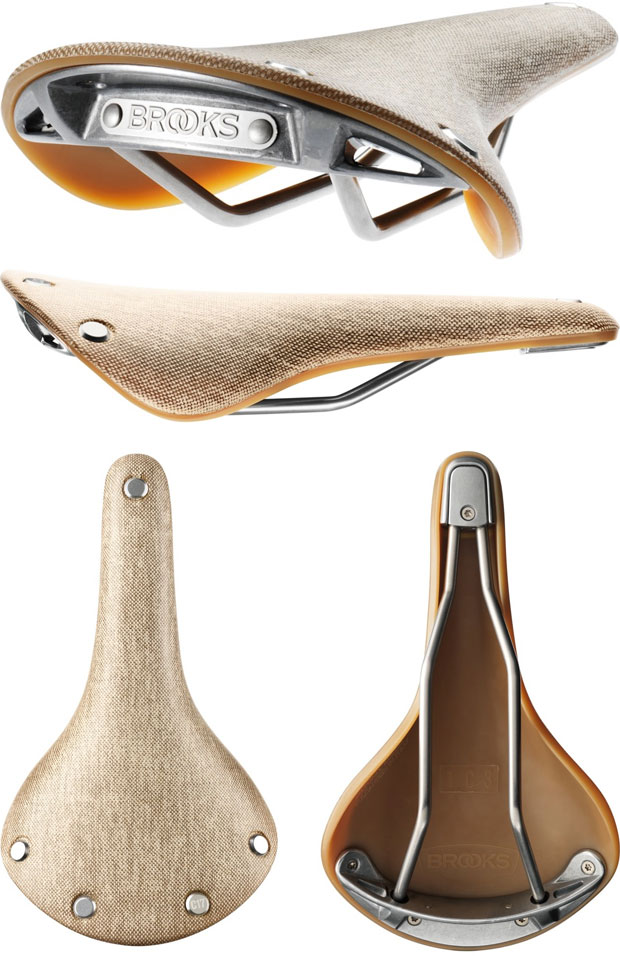
Despite the n-way number of Brooks saddle suspension/chassis/top combinations available, most of the company’s saddles tend to look the same over the years. Sure, you would expect many of the same people and machines to make many of the same looking saddles over time, which may partly explain why their saddles look so similar today as they did over a century ago. But something else is afoot here. Something deeper and far richer in the scheme of cycling things.
Breakthrough Alert: Brooks has discovered what makes bicycle saddles great. Part visionary founder and committed historical cast, part dogmatic dedication to finding what works best, part growing body of institutional knowledge just begging for use and reuse, part fearlessness to try new ideas that might just make a better ride — these are the qualities that define the Brooks brand and their saddles. That many tend to look the same over time is a natural by-product of having discovered something great. As the old saying goes, if it ain’t broke, don’t fix it.
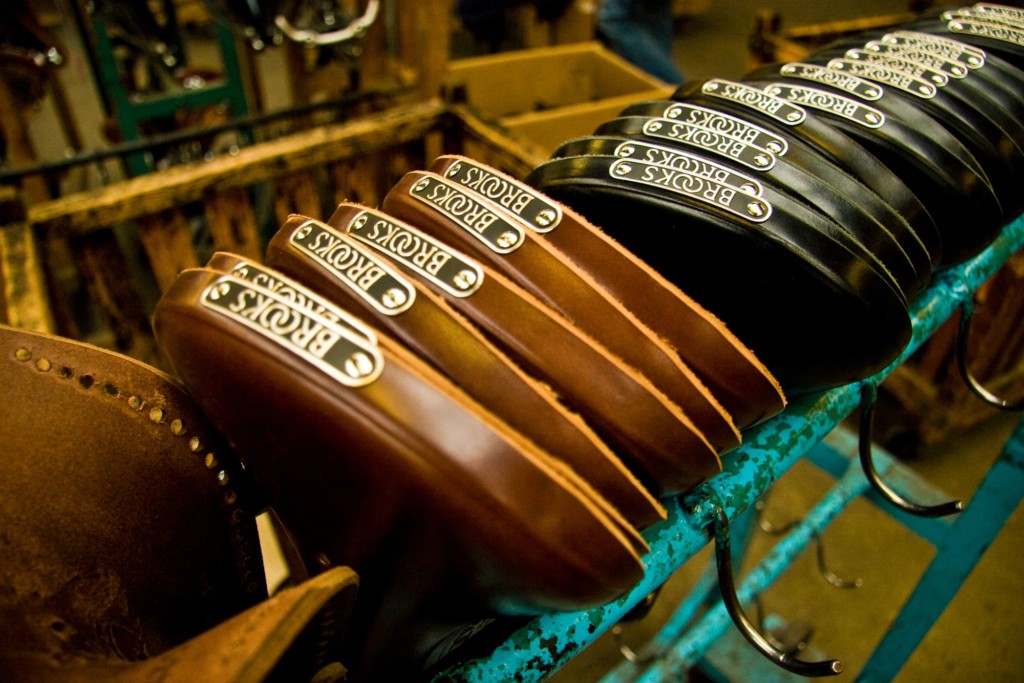
Brooks themselves became so confident in the quality of their saddles they started guaranteeing them for life in the late 1920s. The March 1928 issue of CTC Gazette is said to include an advertisement in which they state, “Brooks Saddles are Guaranteed for Ever.” Whilst not the case for long before or after this ad appeared, most would agree the company still makes a damn fine cycling saddle.
So why, then, were there four distinct deviations from the Brooks-as-cycling-saddle-manufacturer master plan along the way? (Well, three and a half, at least). Before attempting to answer that question, let’s have a look at what those deviations were. Together, they represent among the more interesting anomalies in the company’s storied history.
The half deviation in the Brooks storyline belongs to the No. 1, No. 2 and No. 3 saddle models. No, these were not the first, second and third saddles the company ever made. Yes, they were bicycle saddles made by Brooks with a Brooks nameplate affixed to them. Introduced in 1903 — some two decades after the company first started manufacturing bicycle saddles — these practical but robust models were designed by Brooks and adopted by His Majesty’s War Office for exclusive (and then not so exclusive) use on military bicycles.
The No. 2 Military Saddle was a service version of the civilian B. 10/2. It had a strong canvas support under the leather top, which itself may have been thicker than the B. 10 top. The shorter-lived No. 1 Military Saddle was a service version of the short-lived B. 22/3 saddle. Funny how lack of longevity would seem to run in the family.
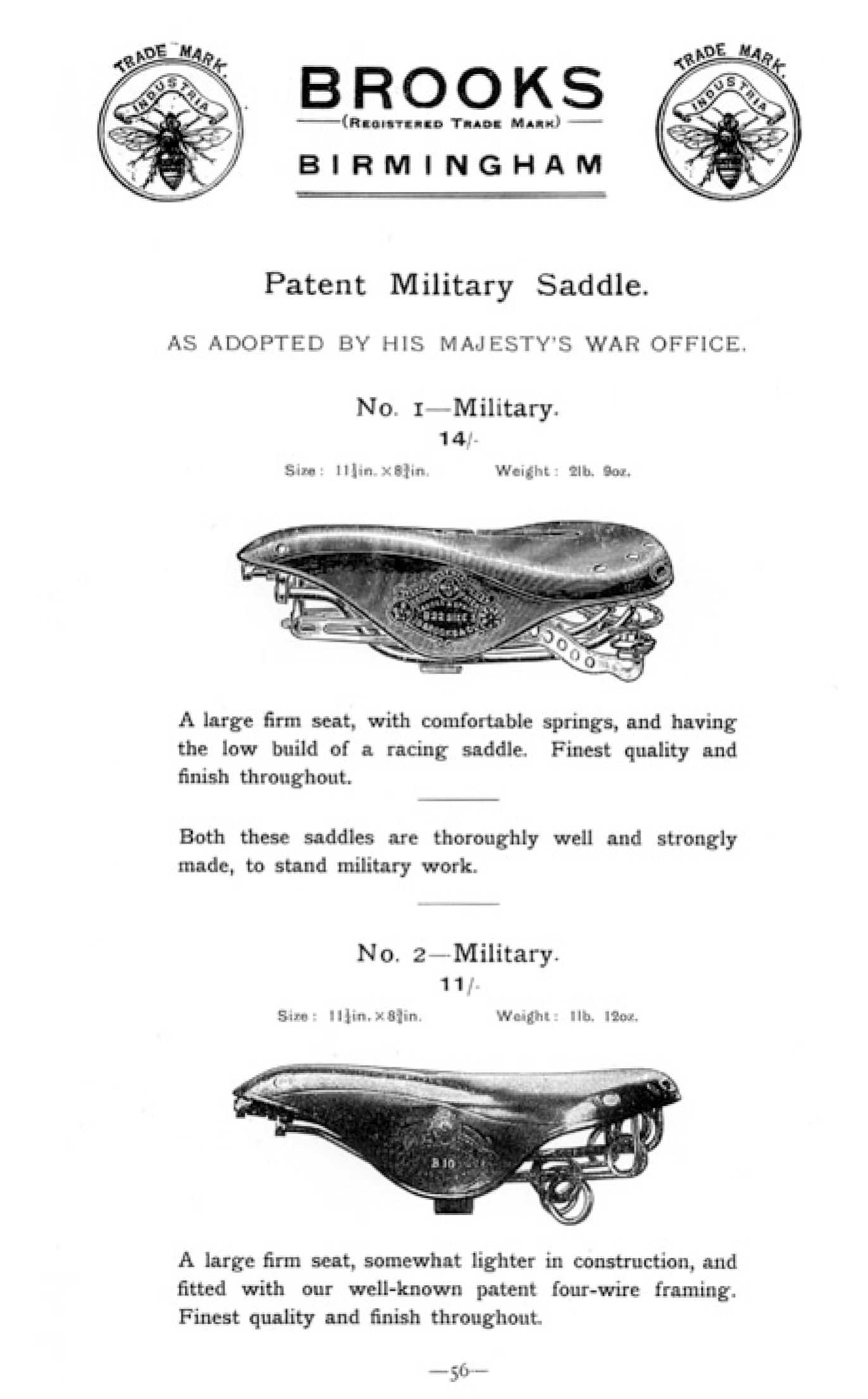
The No. 3 existed to prove otherwise, if not coyingly so. Introduced in 1913 alongside the No. 2 in the Military Saddles range and then reintroduced the following year the same way, the No. 3 morphed into a Commercial and Carrier Service-targeted model by 1927. Army service riders are mentioned as suitable users of the saddle in that year’s catalog — third down on the list of suitable riders, just below postmen and above errand boys. Remember: one must remain nimble when responding to the needs of the day.
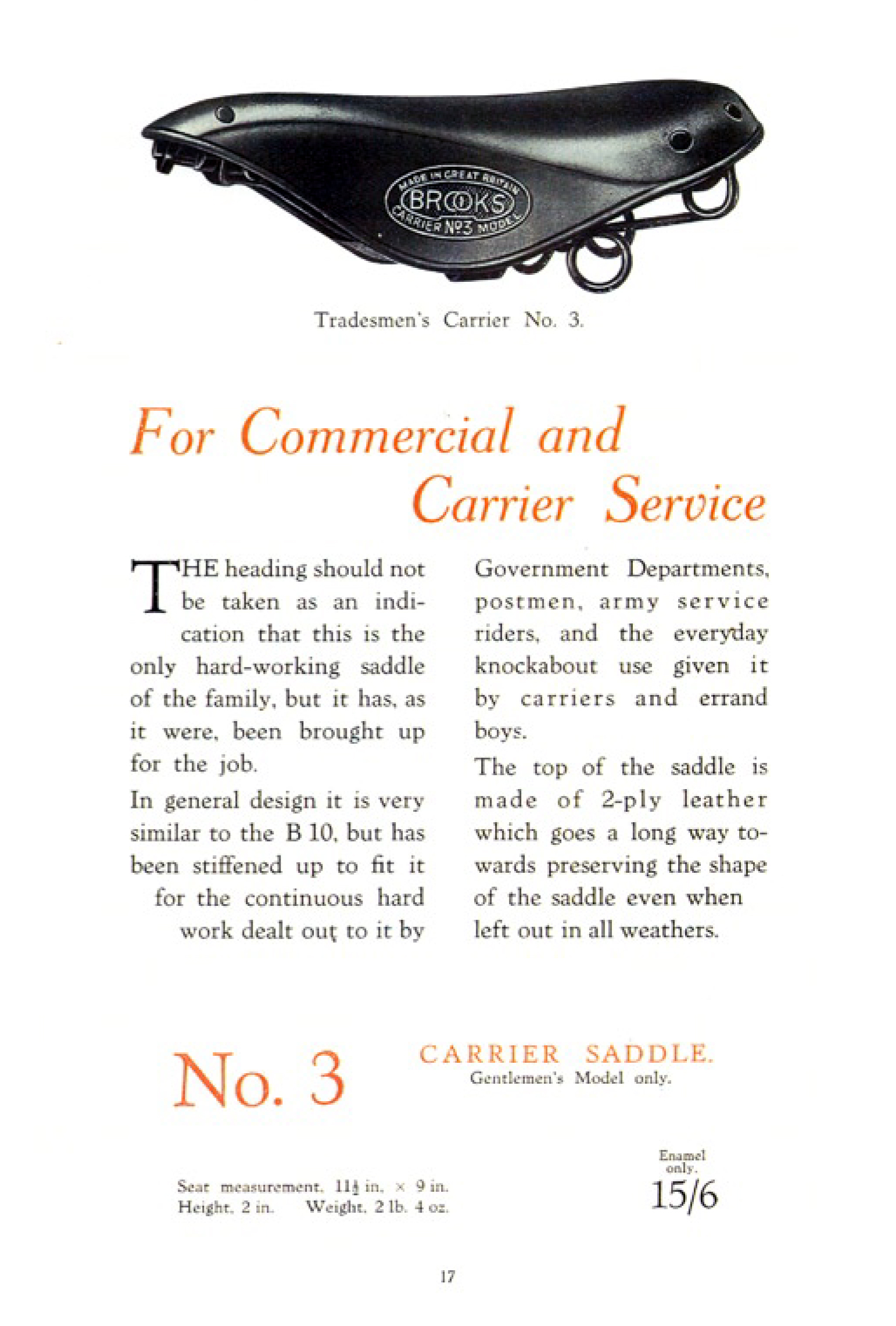
Brooks military saddles were co-marketed alongside general cycling saddles through at least 1914 and then disappeared from civilian saddle catalogs by 1916. Perhaps the company found some outward benefit from the military/civilian association at the onset of World War One, though this changed within two years despite the No. 2 quietly remaining in production until the late 1930s. While not exactly a major deviation, a deviation nonetheless from the civilian consumer sensibilities otherwise guiding Brooks.
Here’s a deviation many human and motor-powered cyclists already know about: Brooks made motorcycle and even motorized tricycle saddles from 1900 through at least 1938, with motor-specific saddles disappearing by that year’s catalog. Motor saddles were a major deviation for Brooks, representing a core segment of company business for much of the early twentieth century.
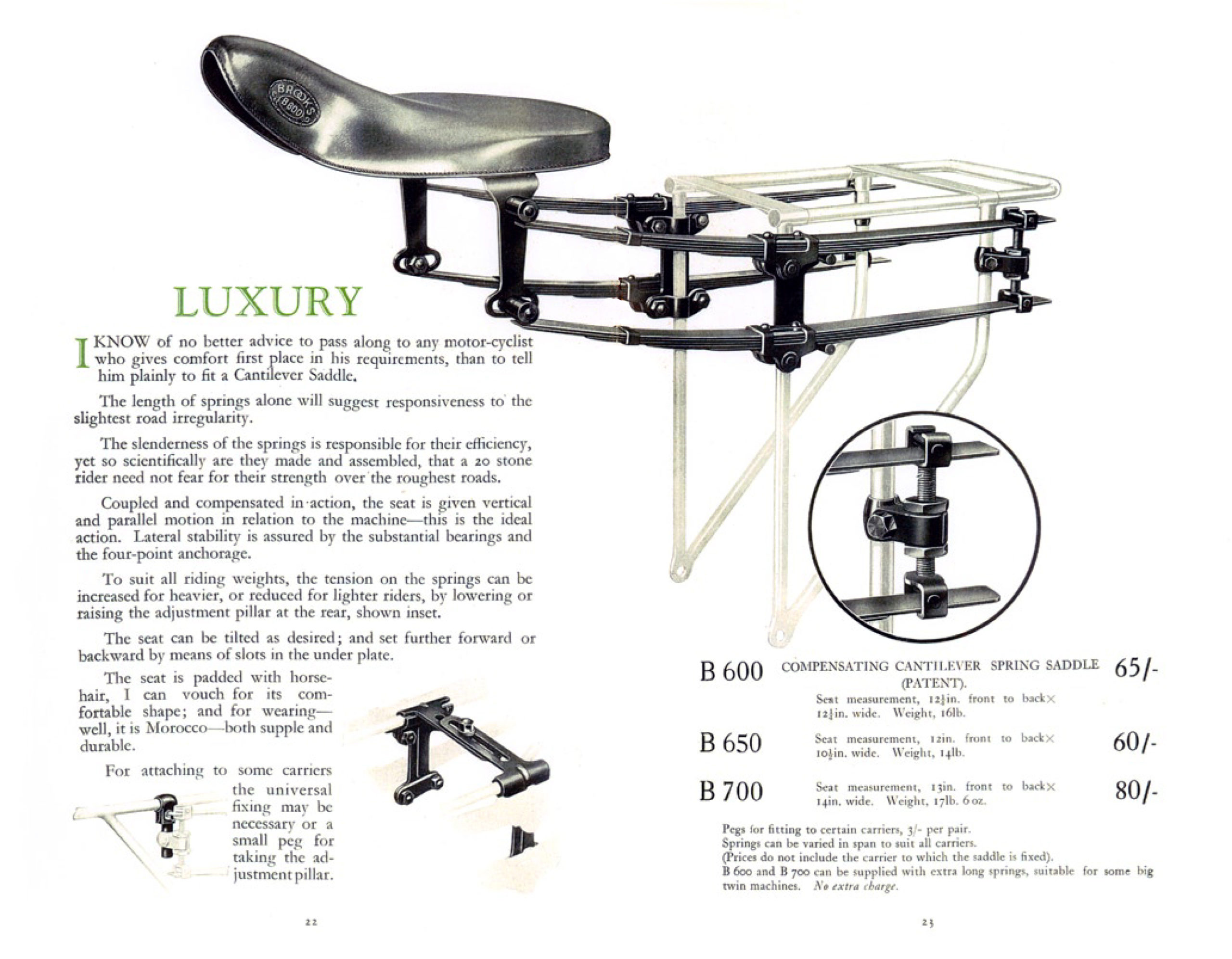
At least fifteen Brooks catalogs dedicated exclusively to motor saddles were published between 1907 and 1935. They include over a dozen models made just for motor vehicles, most featuring wide seats supported by heavy frames with active suspension systems. Some Brooks saddles were even made on behalf of motorcycle manufacturers.
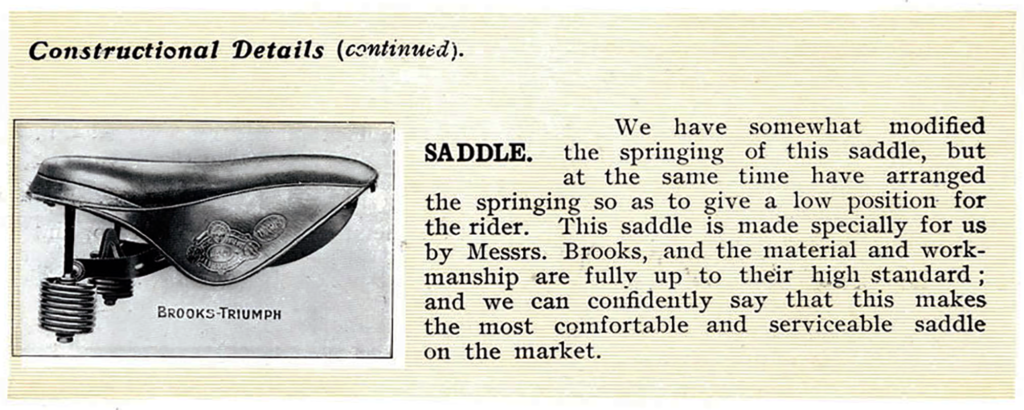
The B. 185 model is a standout, though, even in the world of standout Brooks motor saddles. It featured Brooks’ “famous supple mattress,” which is a skeletal frame system with nine stacked metal leaves forming a flexible center spine — that in turn holds fourteen flat springs radiating outward toward the back cantle plate. These horizontal flat springs support the seat top and are sprung with coils wound from “the finest piano wire.” Comprende, maestro?
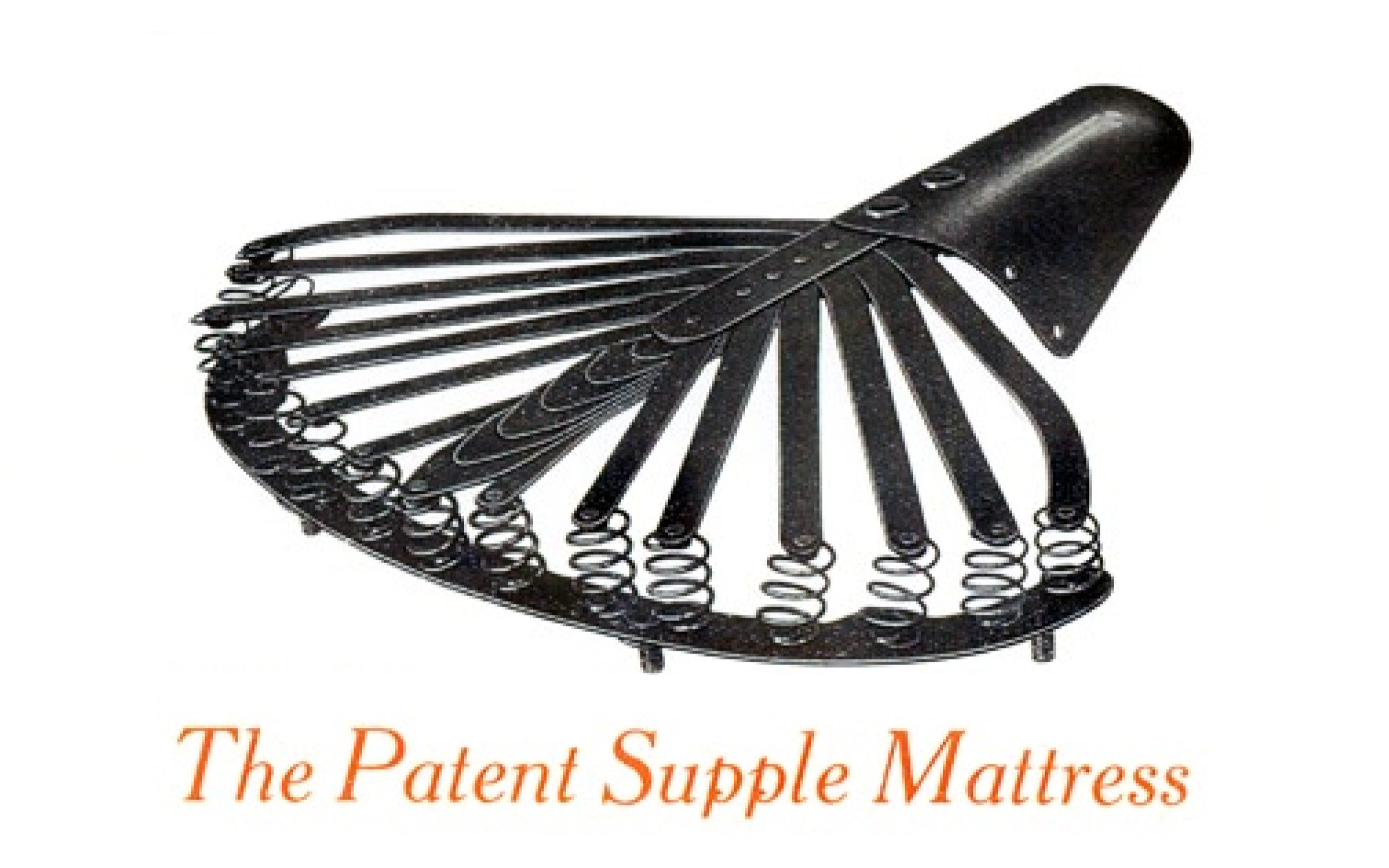
Many Brooks motor saddles featured the supple mattress design, though. What made the B. 185 special was the use of rubber buffer shock absorbers at the rear of the saddle to, “tone down the 80 m.p.h. pot-hole frightfulness” of the bumpy but fast roads back in 1925, the year they were introduced. While the B. 185 placed the shock absorbers between the saddle’s rear cantle plate and motorcycle’s rear mudguard, it took just two years for other saddles in the Brooks line to bring this feature onto saddles themselves.
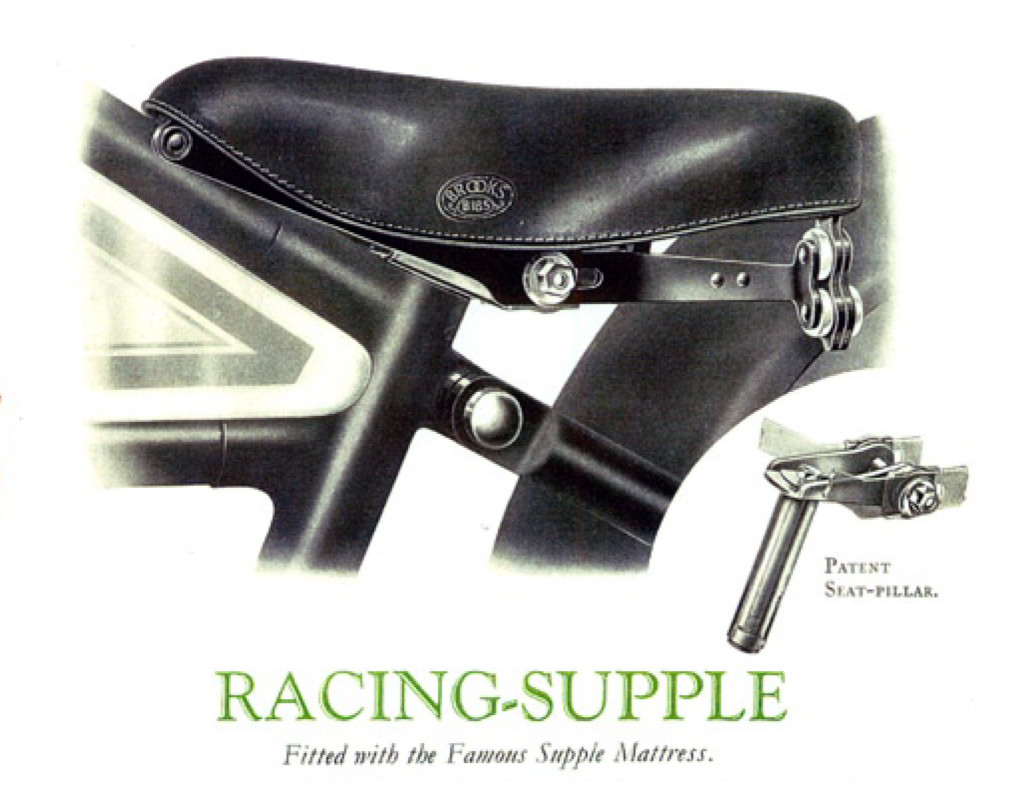
Included here was the B. 28, which was introduced in 1927 to allow bicycle riders to experience the same cushy benefits motorcycle riders were already experiencing. And to think Specialized didn’t introduce those vibration-dampening Zertz inserts into their forks, seat stays and seat posts until eighty years later. Wait, did someone say 650B was back in style?
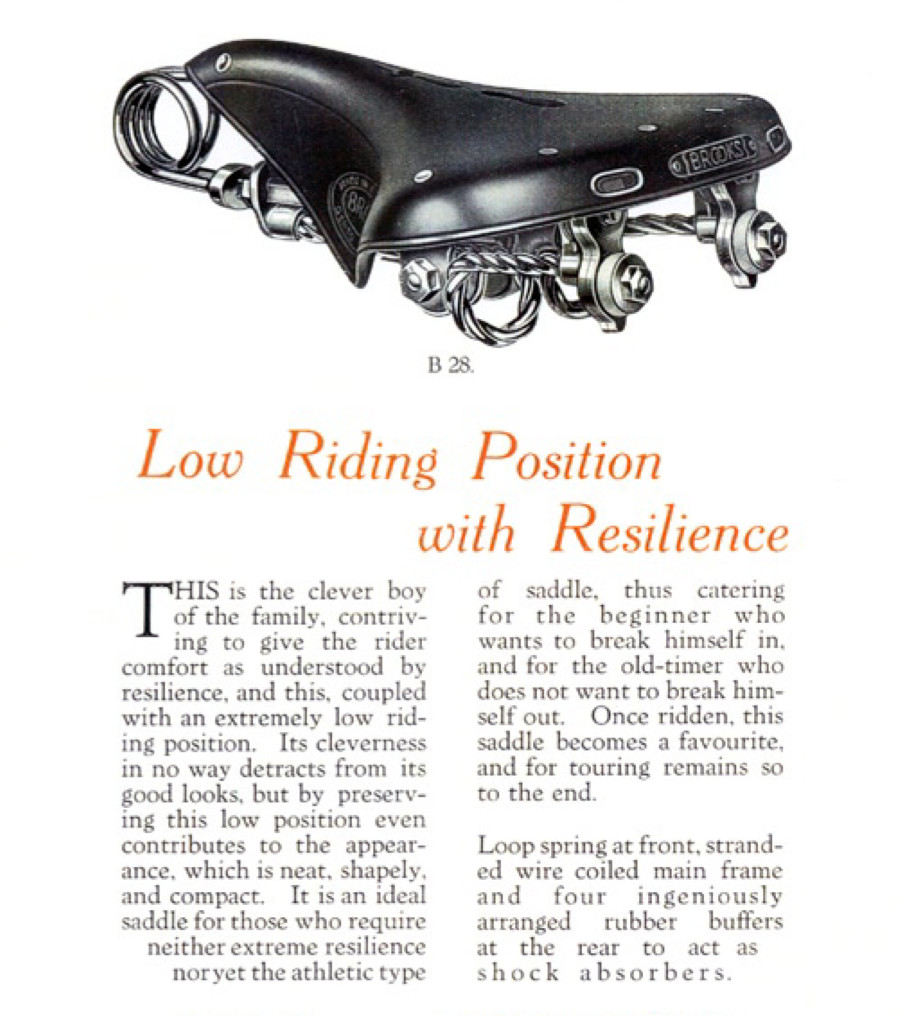
The next deviation from the tried-and-true Brooks master plan concerns no fewer than ten different sub-brands of saddles. Relatively few Brooks aficionados have ever heard the names Zapho, Impervia, Kaydex and Plyflex, let alone had the privilege of their asses touching one of their saddles. That’s because they were only produced in limited numbers for short periods of time — by Brooks standards.
At least they were also memorialized in Brooks catalogs from the early 20th century. Other sub-brands like Challenge, Flexal, Legion and Royal received no coverage whatsoever in any available Brooks-brand collateral, though they still contributed to the company’s bottom line with all manner of saddle designs starting in the late 1920s.
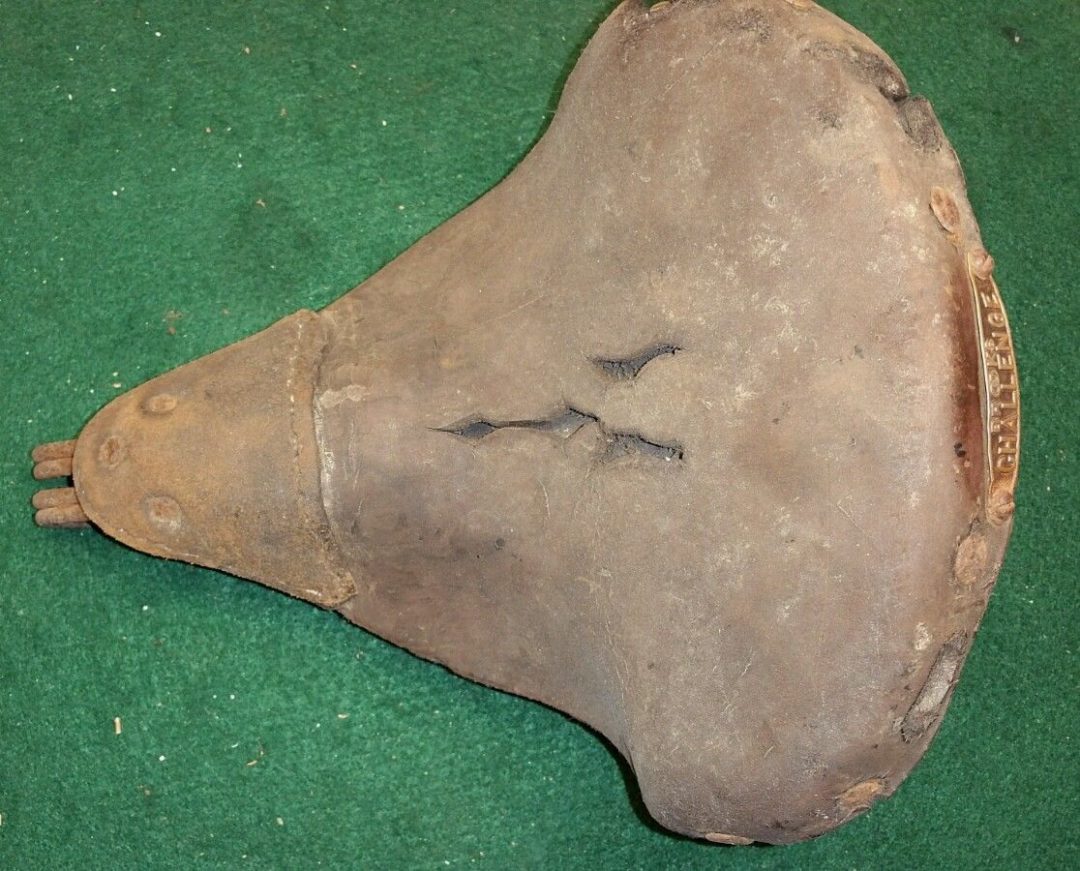
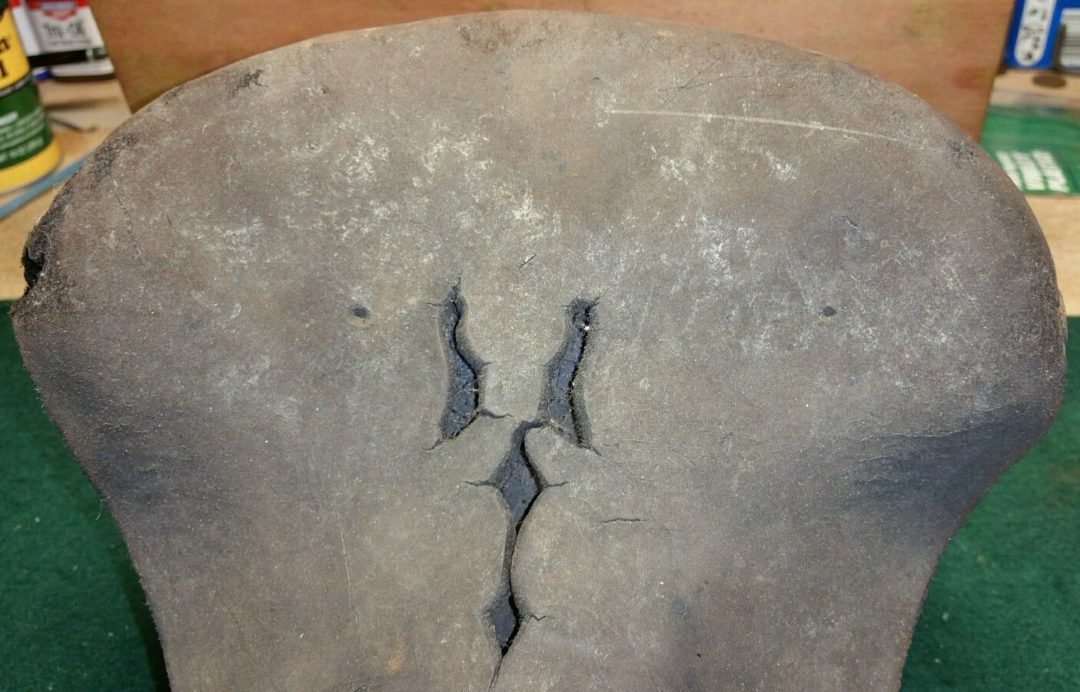

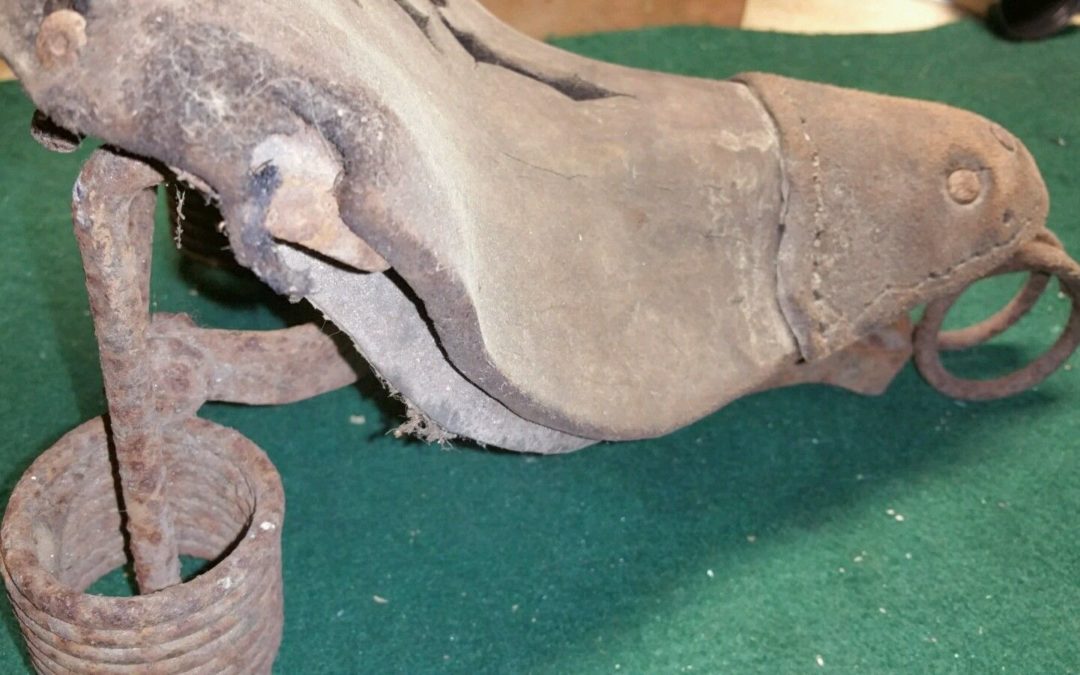
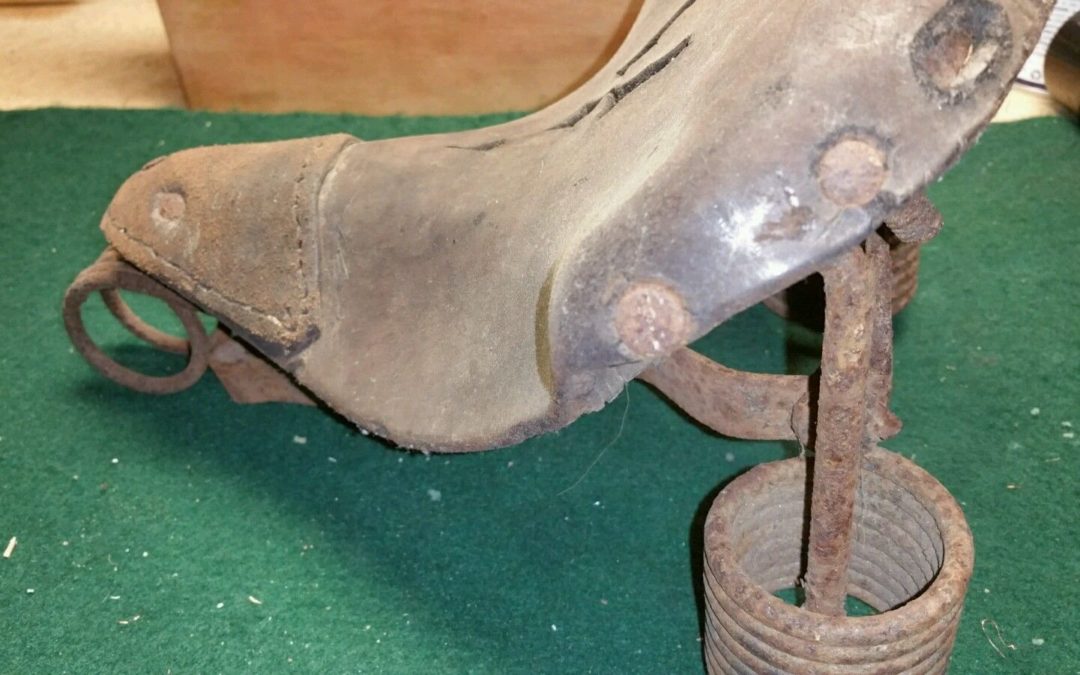
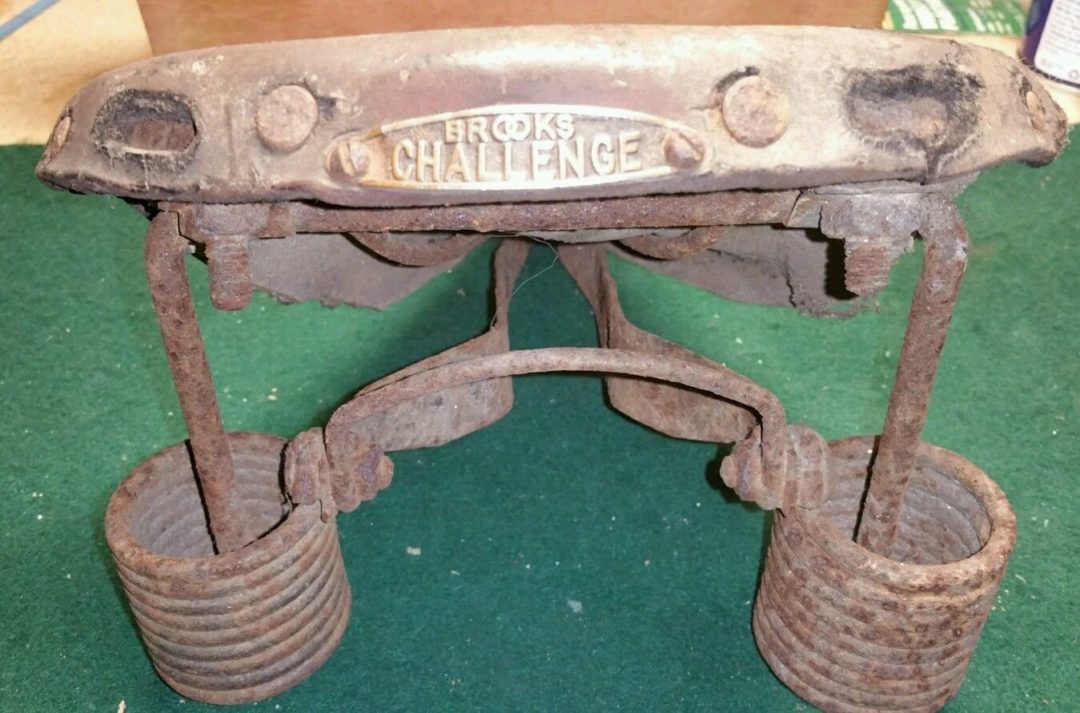
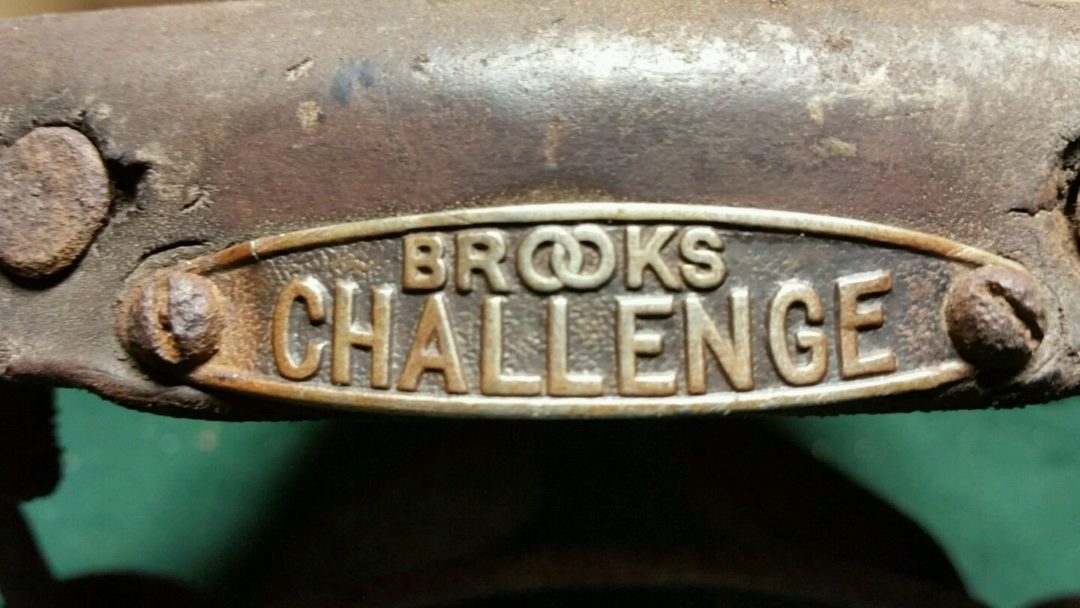
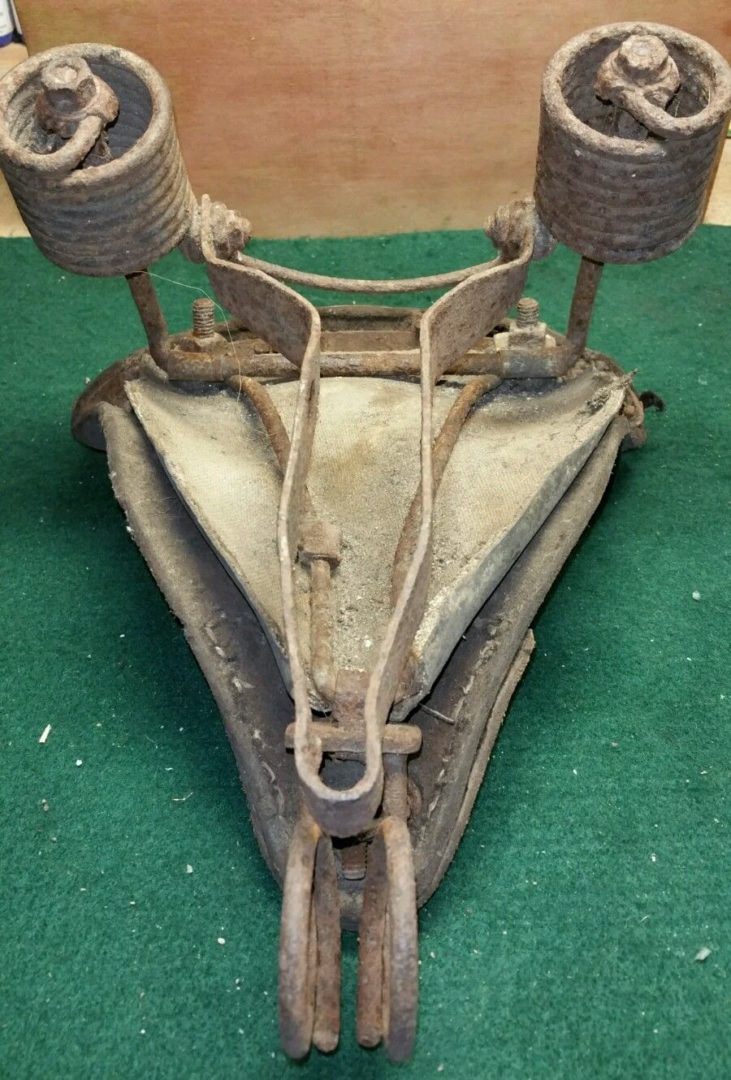
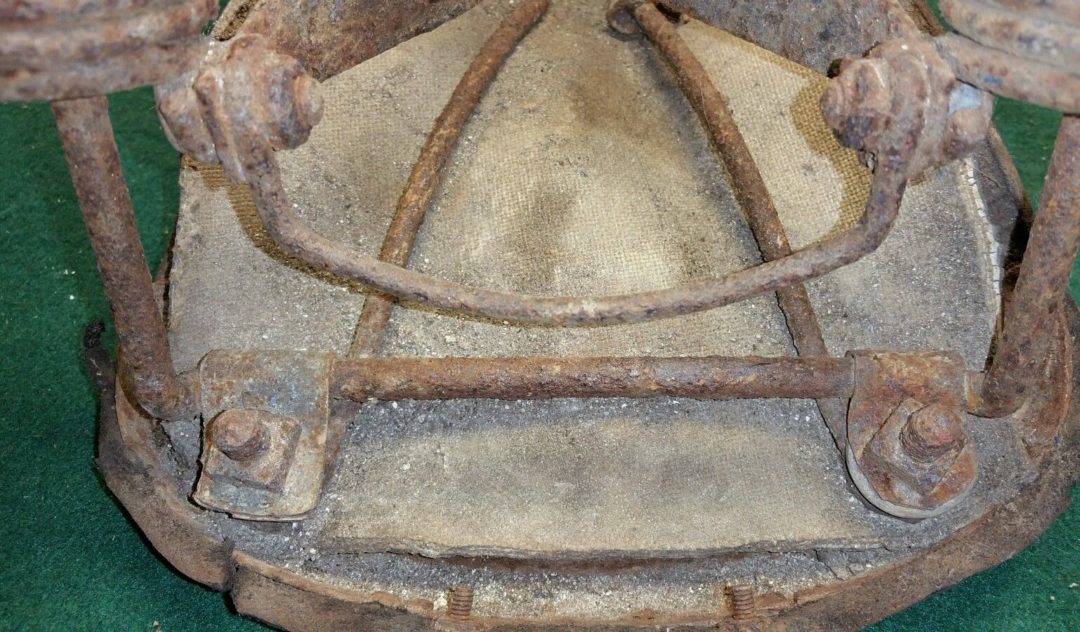
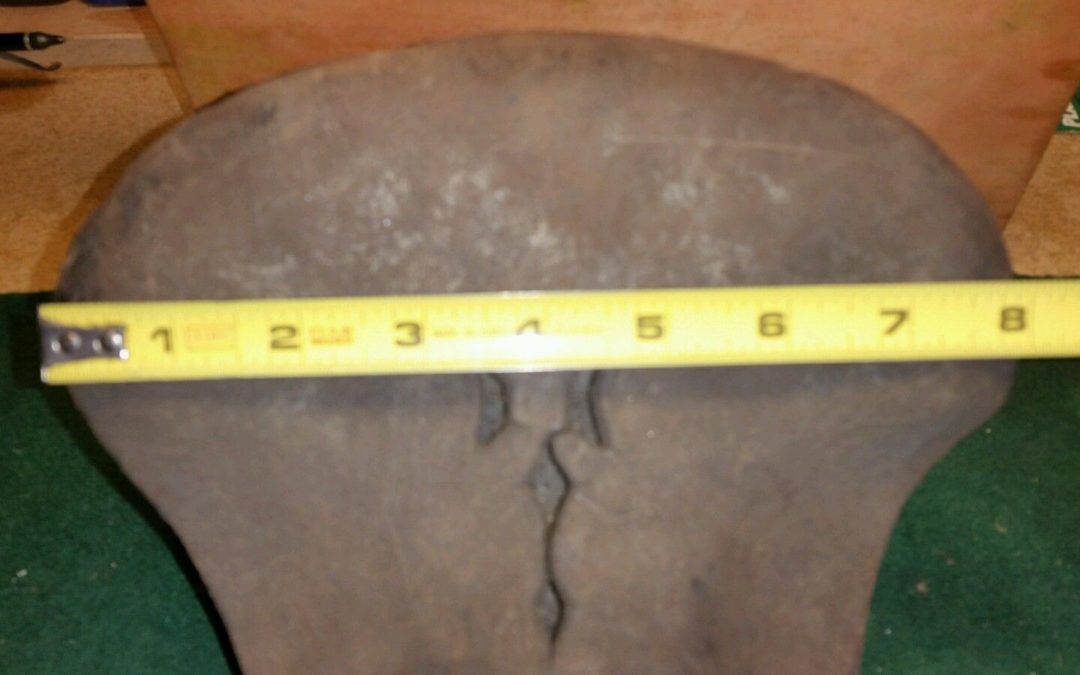
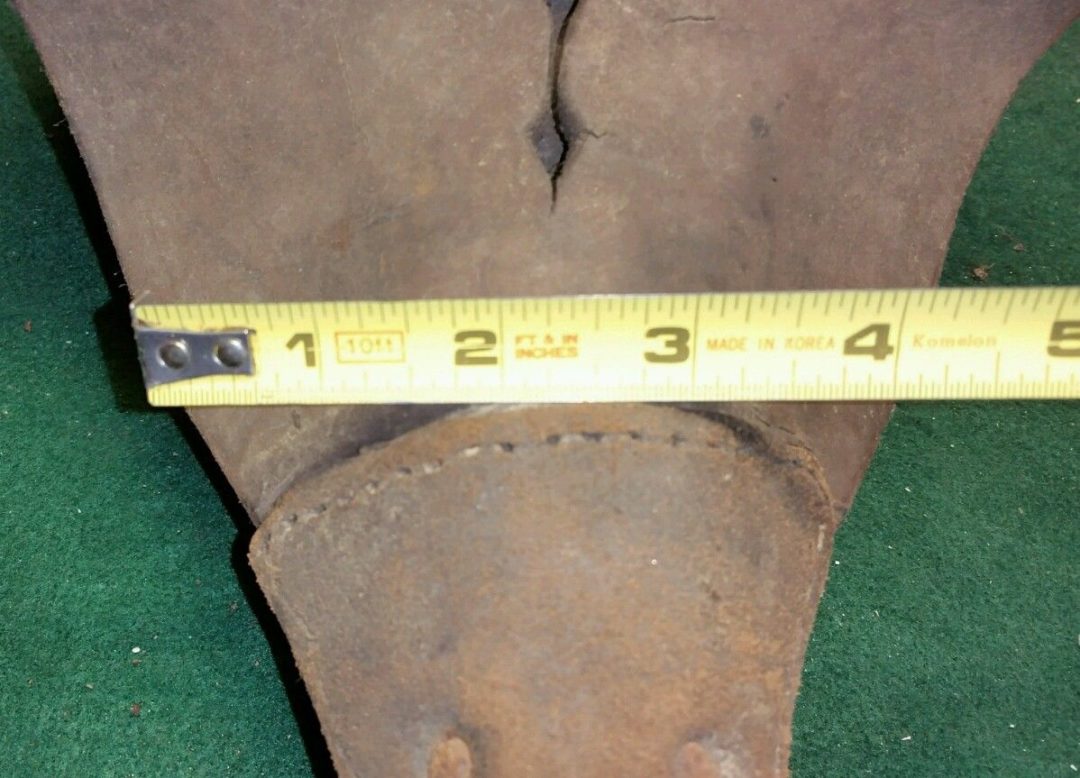
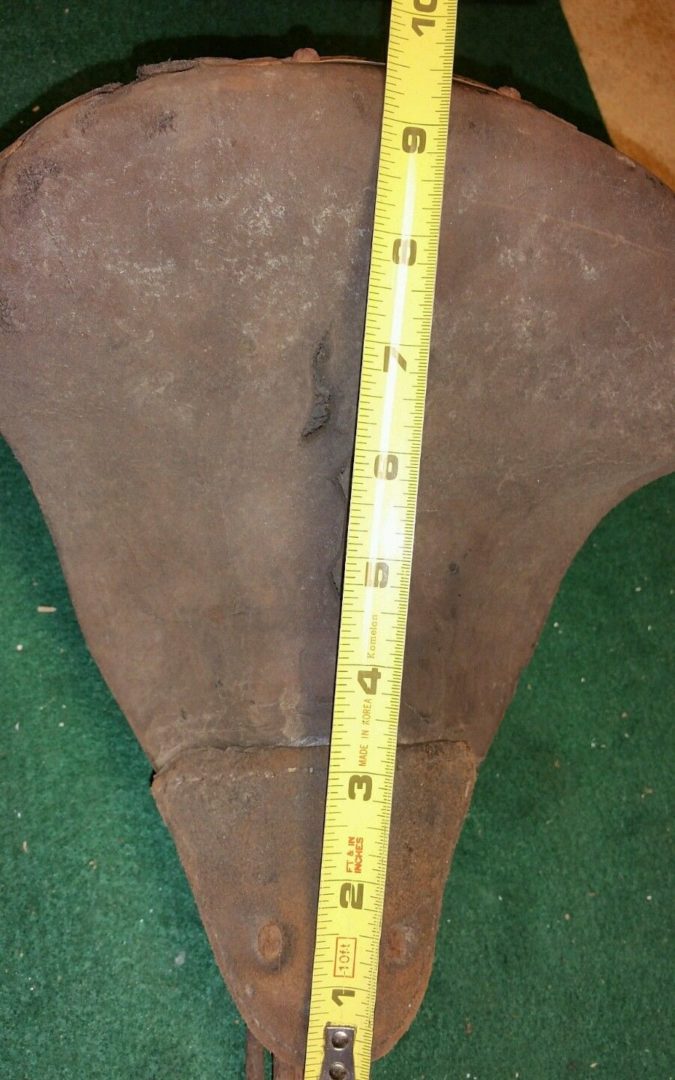
And then there were Brooks motor saddles made exclusively for Sunbeam and Triumph, two popular mid-20th century motorcycle manufacturers. These saddles were made in a similar pattern to other contemporary models, but the Triumph motor saddle carried a smallish “identifier” stamped in an oval towards the nose. It also featured not just one but two Brooks badges to correspond with the exotic serpentine cantle — their only saddle fitted this way, so says a knowledgeable source.
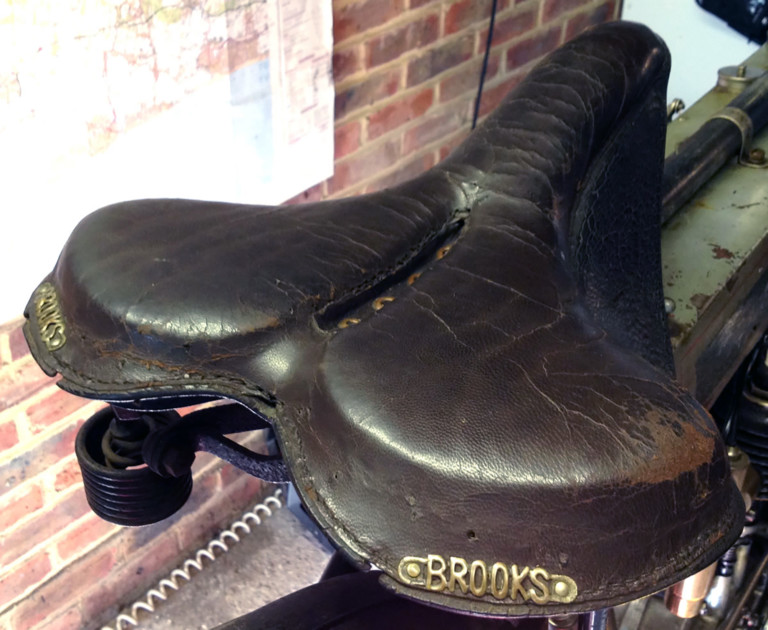
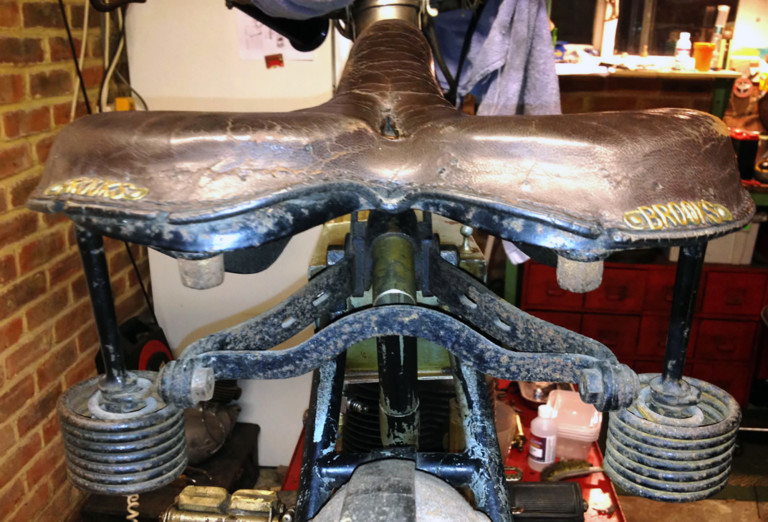
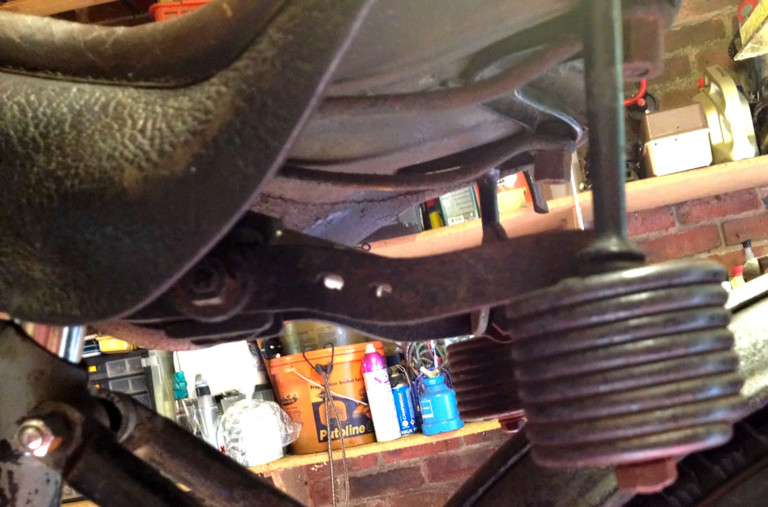
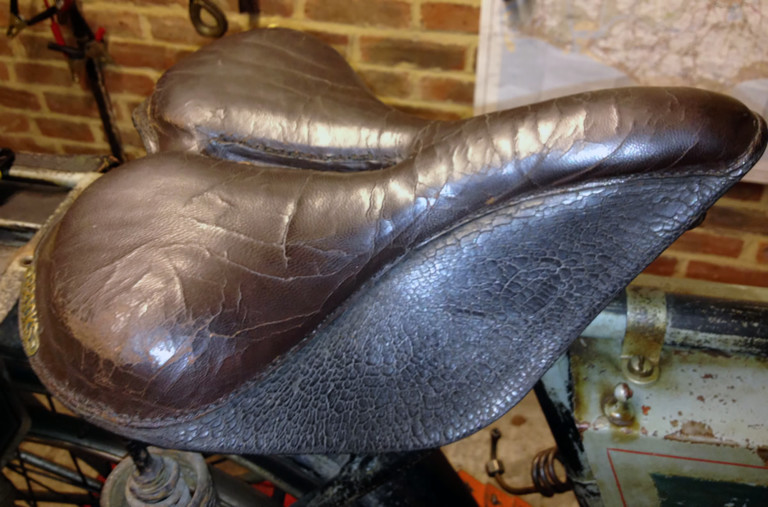
Starting with Zapho, let’s take a closer look at the four sub-brands included in Brooks catalogs. Introduced in the 1901 catalog and gone by 1903, the four Zapho saddles — the Z. 20, Z. 20L, Z. 21 and Z. 25 — were marketed as more economical versions of their basic loop, coil and straight wire Brooks counterparts. While lower in price, Zapho saddles were still made with “correct mechanical principles” but only offered in black enamel finish. Zapho saddles were Brooks’ first foray into different sub-brands.
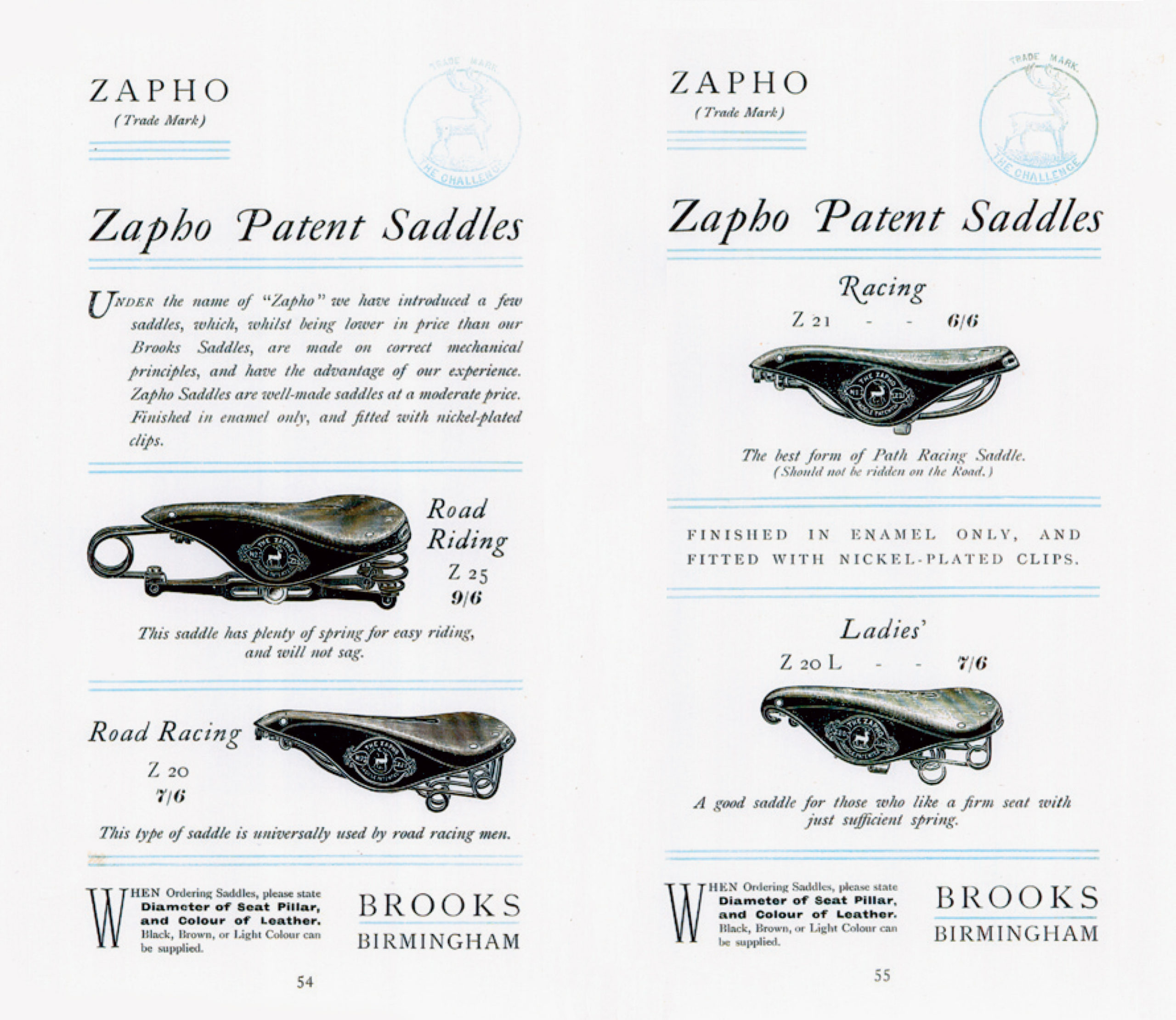
Impervia saddles followed with the R. 2, R. 3 and R. 6 models in the 1933 catalog. Some Impervia saddles employed a two-ply method of construction whereby a weatherproof top was molded to a leather foundation. Marketed as “non-cracking, non-clinging,” it would reason leather tops had at least some problem with cracking and clinging. Impervia saddles had spring mattress suspensions and were available with leather or waterproof tops. They were nonetheless gone by 1936.
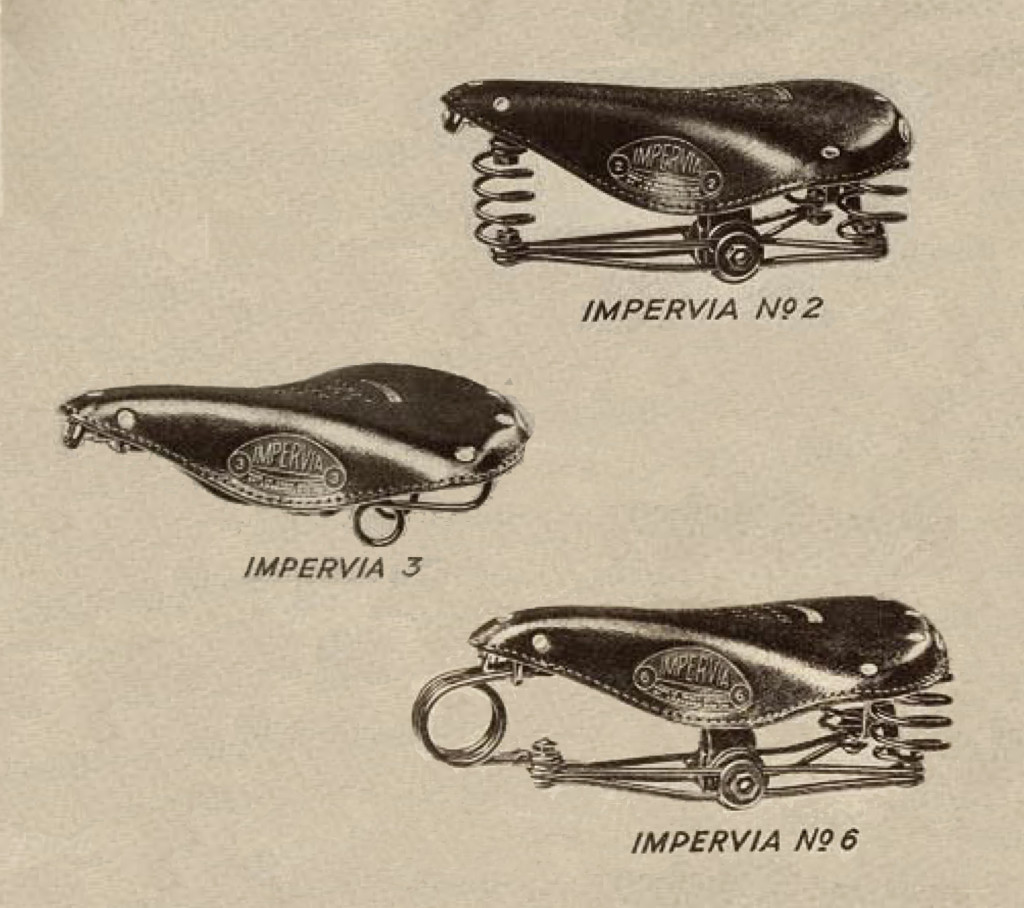
Kaydex saddles came next. Introduced in the 1933 catalog and gone after 1937, Kaydex saddles were relatively economical spring saddles with sturdy leather seat tops. They were meant to provide a “super weatherproof” alternative to Brooks-brand saddles without the added encumbrance of also needing to offer leather seat tops. Most Kaydex saddles were 40% or so cheaper than their roughly equivalent Brooks counterparts.
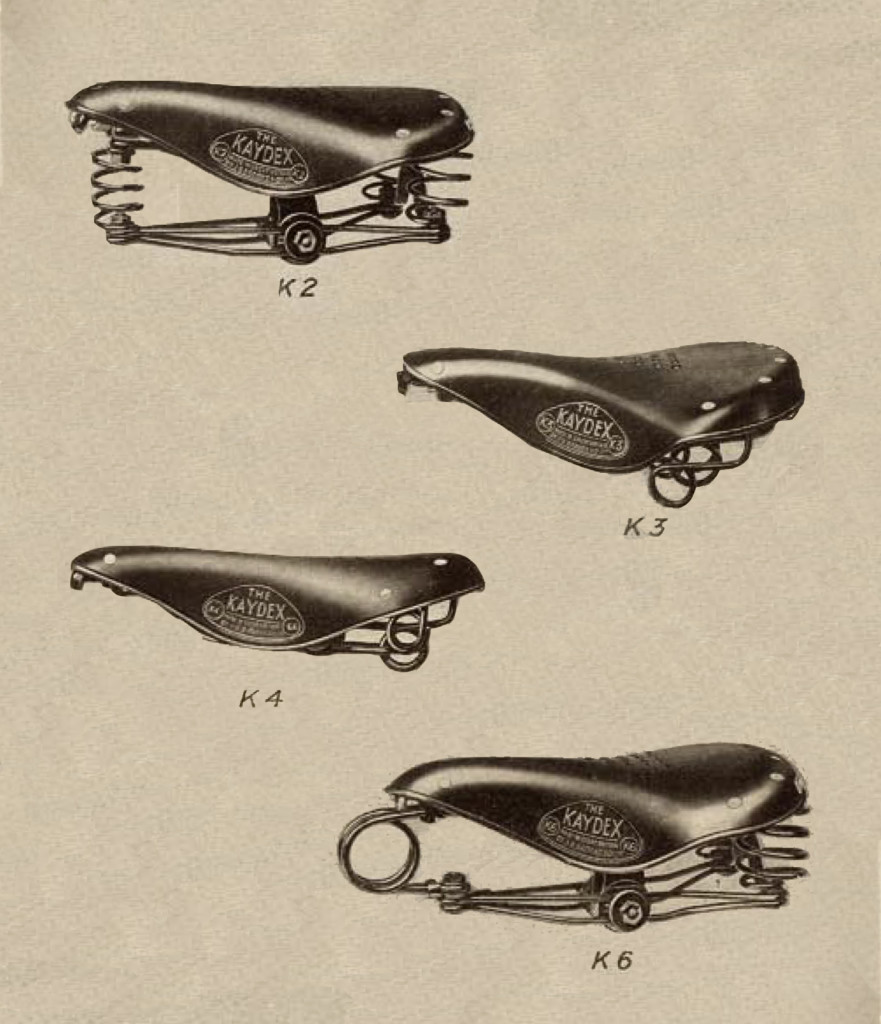
Plyflex saddles were the last sub-brand of saddles manufactured and co-marketed by Brooks. Introduced as Brooks Plyflex on saddles like the P. 205, P. 206, P. 207, P. 208 and P. 209/L models in the 1933 catalog, the Plyflex molding process would come to constitute its own sub-brand by 1937. Familiarly enough, the Plyflex process used a multi-ply top molded to a leather foundation to provide extra cold and wet weather protection to the seat top.
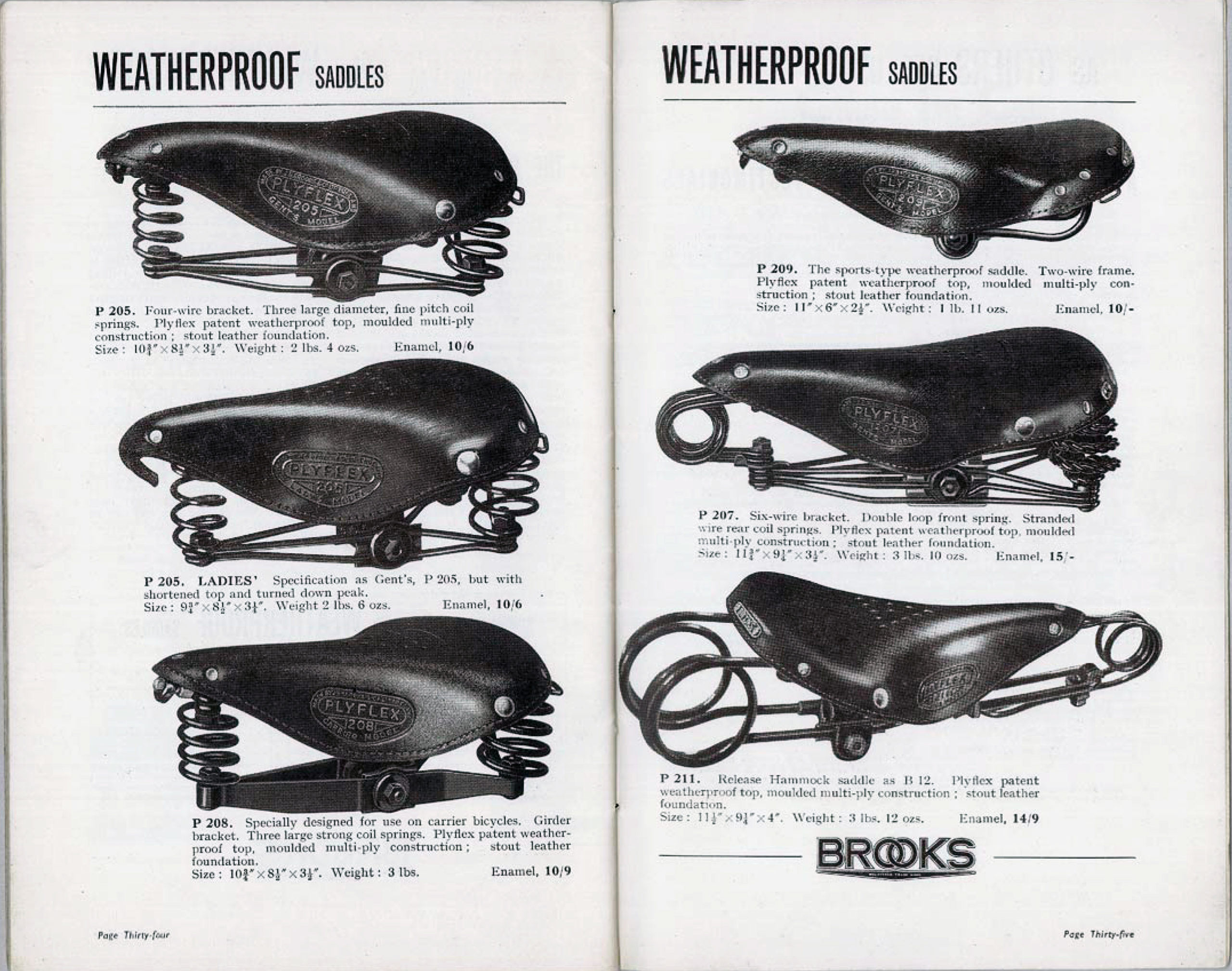
Despite being “a popularly priced weatherproof range,” Plyflex saddles seem to have added an additional third layer of protection compared to their Impervia brethren and sistren, which were only two-ply. Also regarded as non-cracking, non-clinging, flexible and durable, Plyflex saddles disappeared by 1950 and maybe earlier, noting a ten year gap in available Brooks catalogs from 1940 through 1949.
The final deviation from the Brooks master plan concerns a pair of sub-brands that were unlike anything else Brooks had done up to 1935 or has ever done since. Antler Ltd. was a brand under which Brooks sold leather goods and travelware, with earlier products sold under the Brooks name providing an obvious bridge to the elegant Antler product line. Think heirloom-quality luggage, picnic sets and purses.
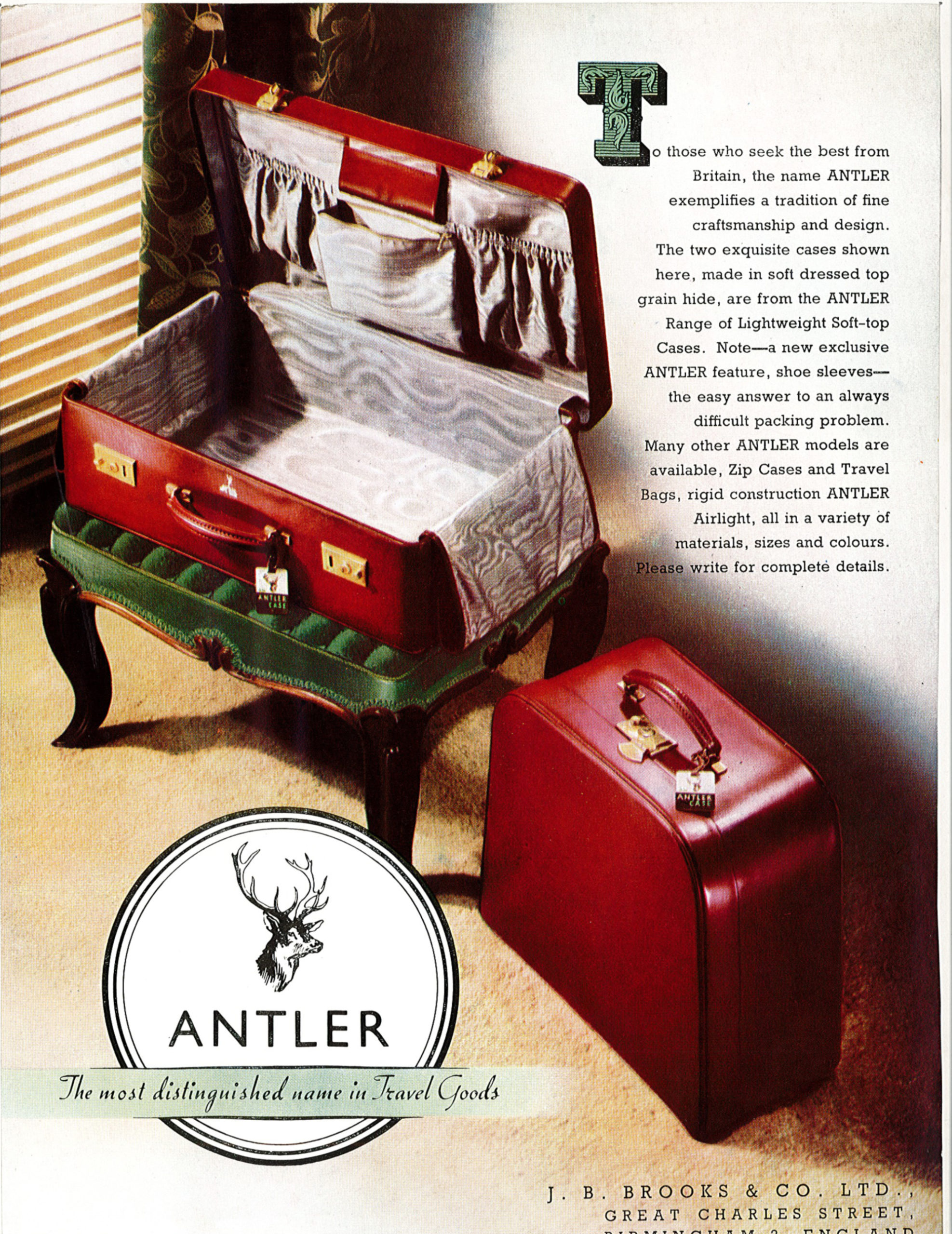
The Evertaut Ltd. brand and its products were somewhat less obvious in their historical precedence at Brooks. An office and industrial furniture brand, Evertaut initially specialized in selling metal furniture and “tubecraft” — chairs, stools, tables, desks, cabinets, mirrors and such made of tubular metal — for use in “home, hotel or business.”
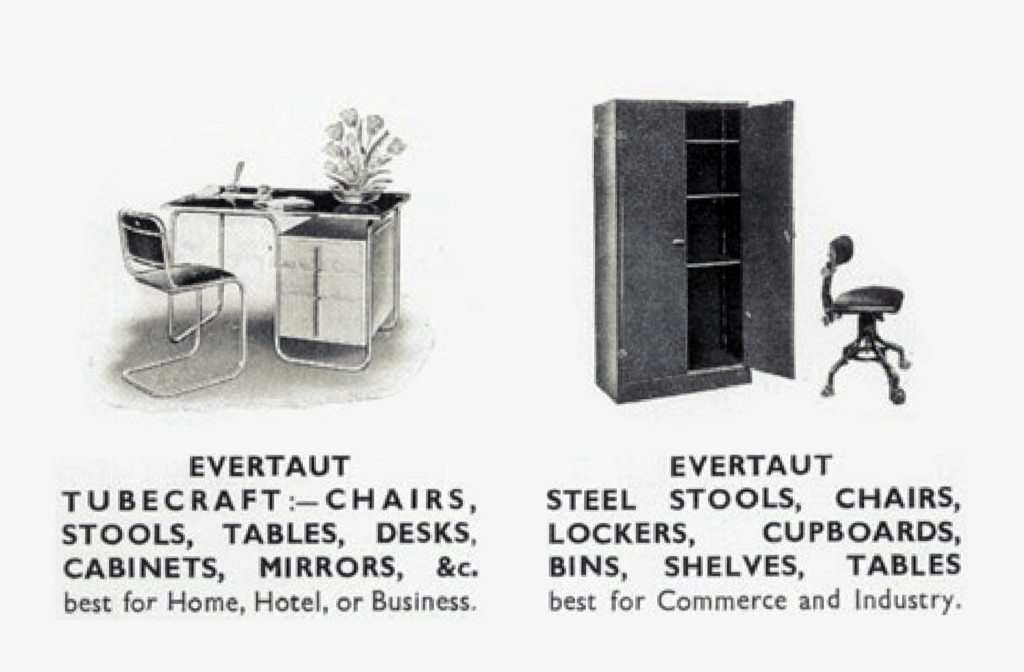
Their designs are reminiscent of other earlier functionalist industrial designs by the likes of Herman Miller, though do not have the same organic warmth of Eames designs, for example. Today, companies like Steelcase and MillerKnoll compete for the same market at various ends of the price spectrum.
Products from Antler and Evertraut were only available wholesale when introduced. Why Brooks chose not to get behind selling these products directly remains unknown and something of a mystery, as most other products — including those under the Zapho, Impervia, Kaydex and Plyflex names — were sold directly (and wholesale, too) up to that point. Much like Brooks still does today.
Maybe it had something to do with expanding supply chains and new distribution channels made possible by logistics breakthroughs and growing consumer sophistication. Or maybe it had something to do with leatherware and office furniture not fitting into the master plan. Indeed, Antler and Evertraut fail to elicit the same dreamy thoughts about earthly freedoms as Brooks does.
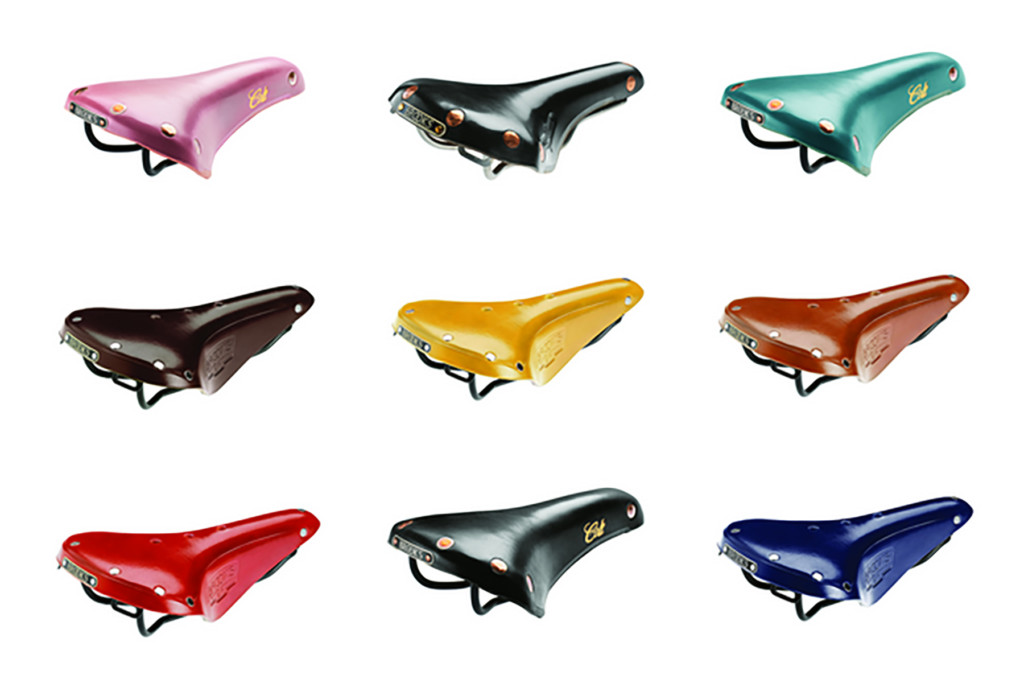
Regardless, it is intriguing to ponder what Brooks would be now had they continued diversifying into lateral markets in the same way they approached bicycle saddle and bag making. Leather and steel cases in point: both Antler and Evertraut continue producing their fine goods today.
So, what makes a perfect bicycle saddle? Evidently, perfection means different things to different people. Judging by the saddles Brooks has made since J.B. traded his horse for a bike, people’s range of preference has been relatively consistent and narrow over the past 130 some odd years.
Models like the B. 15, B. 17, B. 66/B. 67, Team Professional and Flyer have come to define saddle archetypes that experienced riders now know from aesthetic and functional standpoints. Familiar appearance and ass-feel don’t come easy, but when they do come, they stay with you for a while — like four generations of hardcore cyclists.
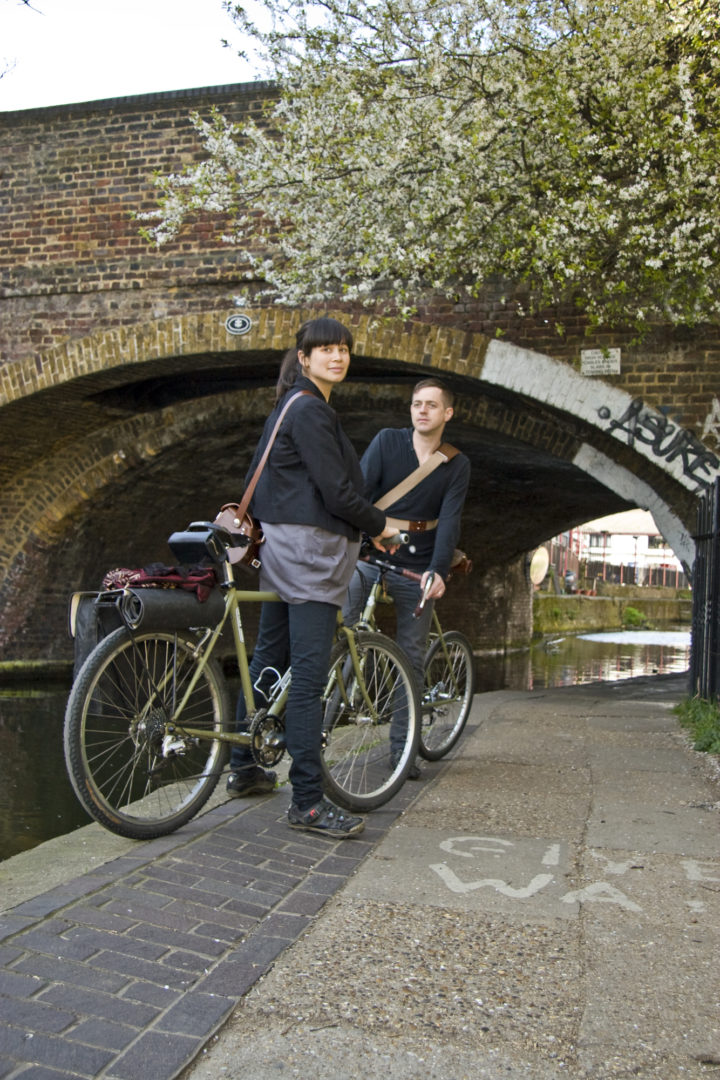
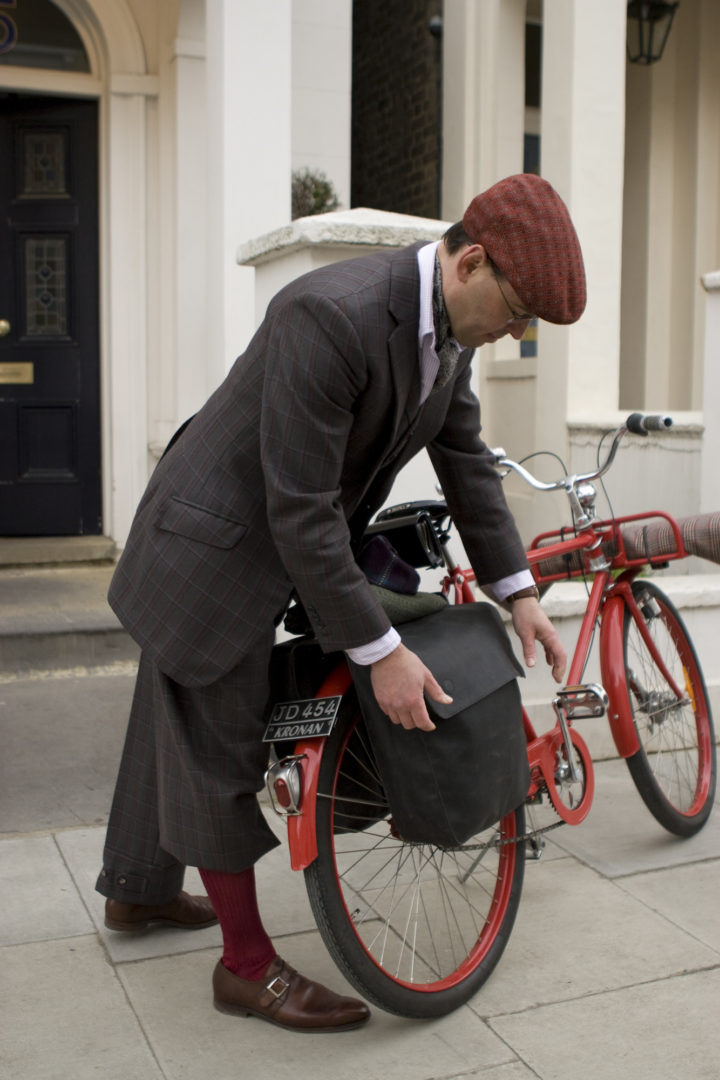
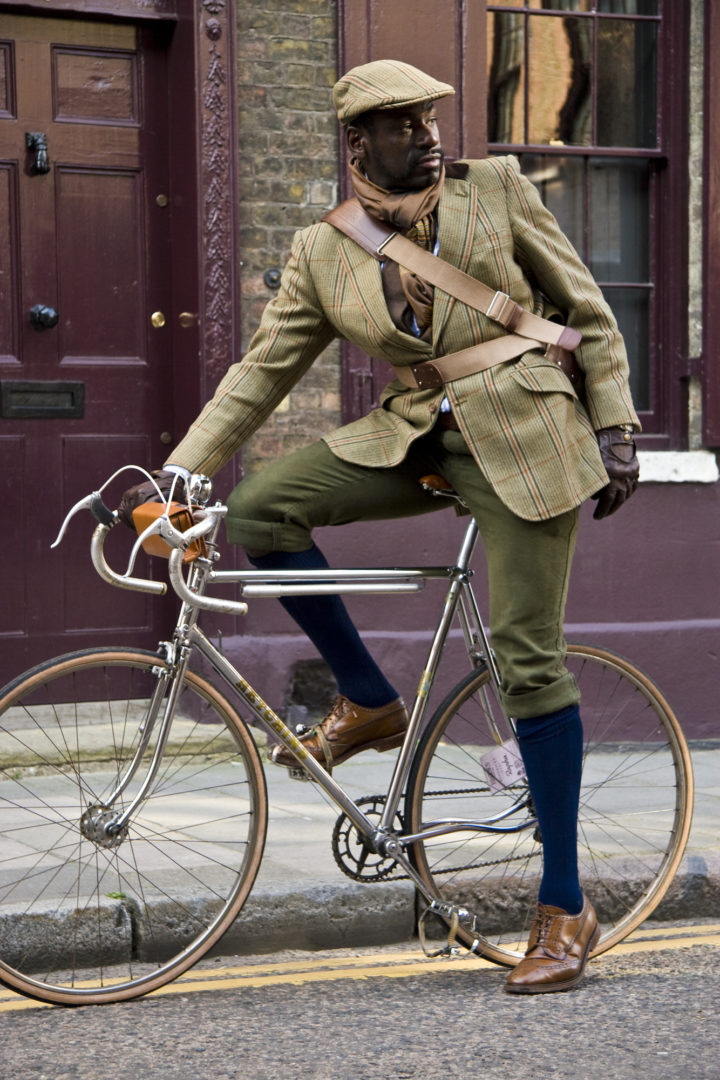
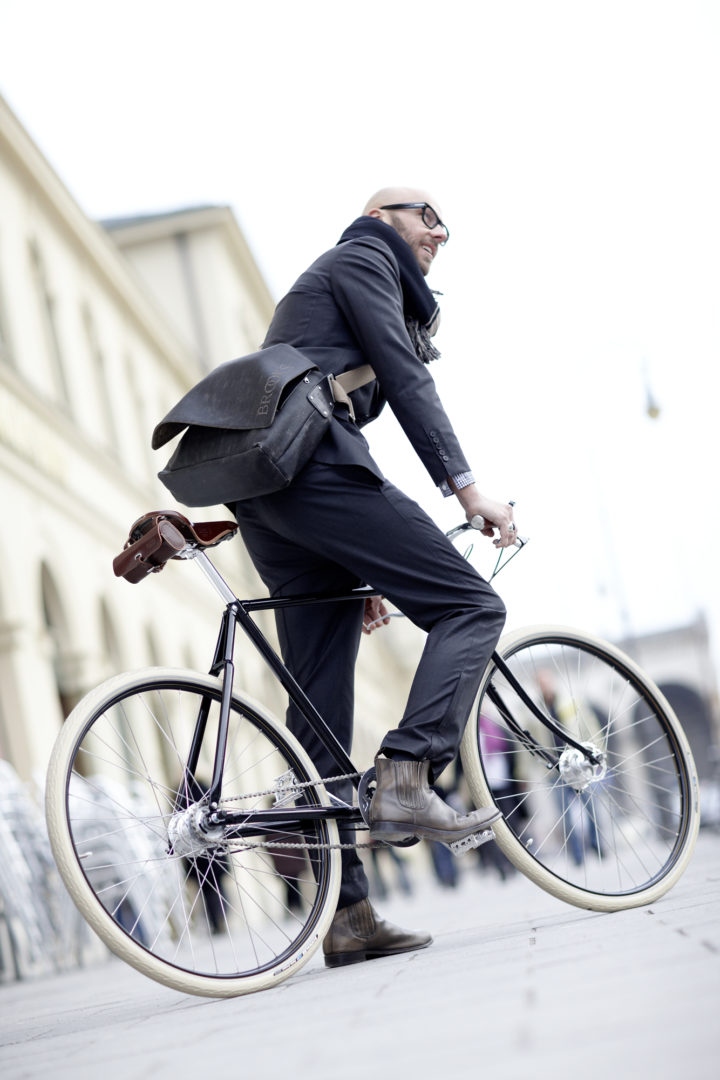
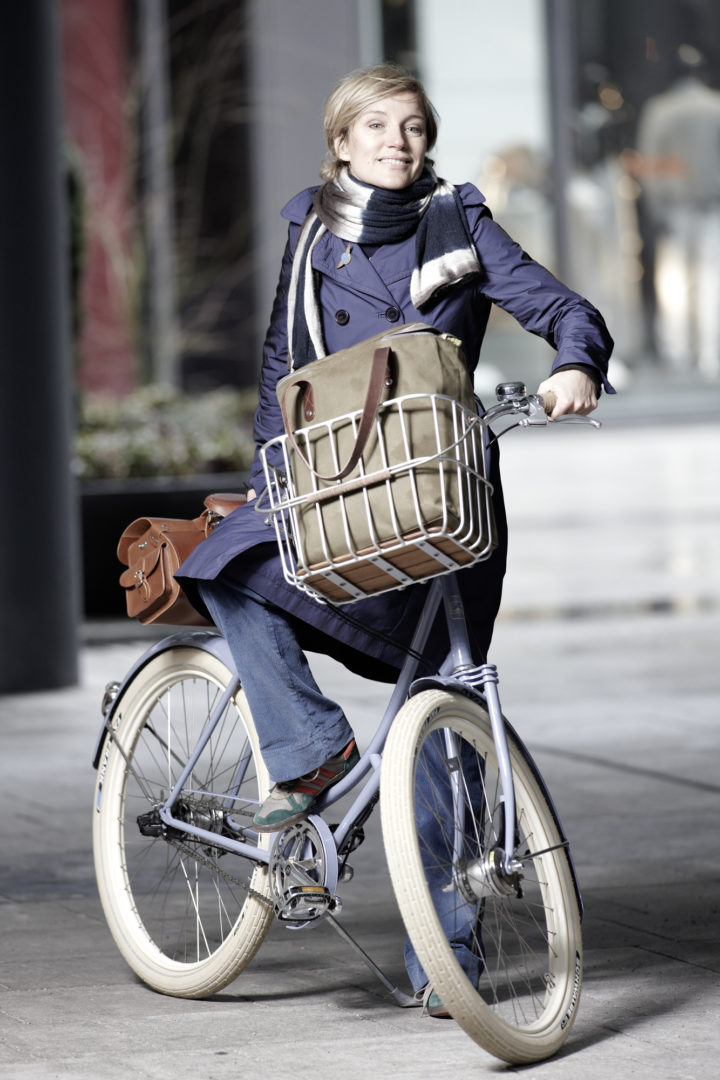
Human anatomy being what it is, there are at least two dimensions separating some bicycle saddles and their riders from others. Gender is one such dimension, with male and female saddles remaining consistently distinct from each other since the beginning of saddle time. Purpose is the other such dimension, with saddles built for different types of riding also remaining consistently distinct from each other since the beginning of saddle time.
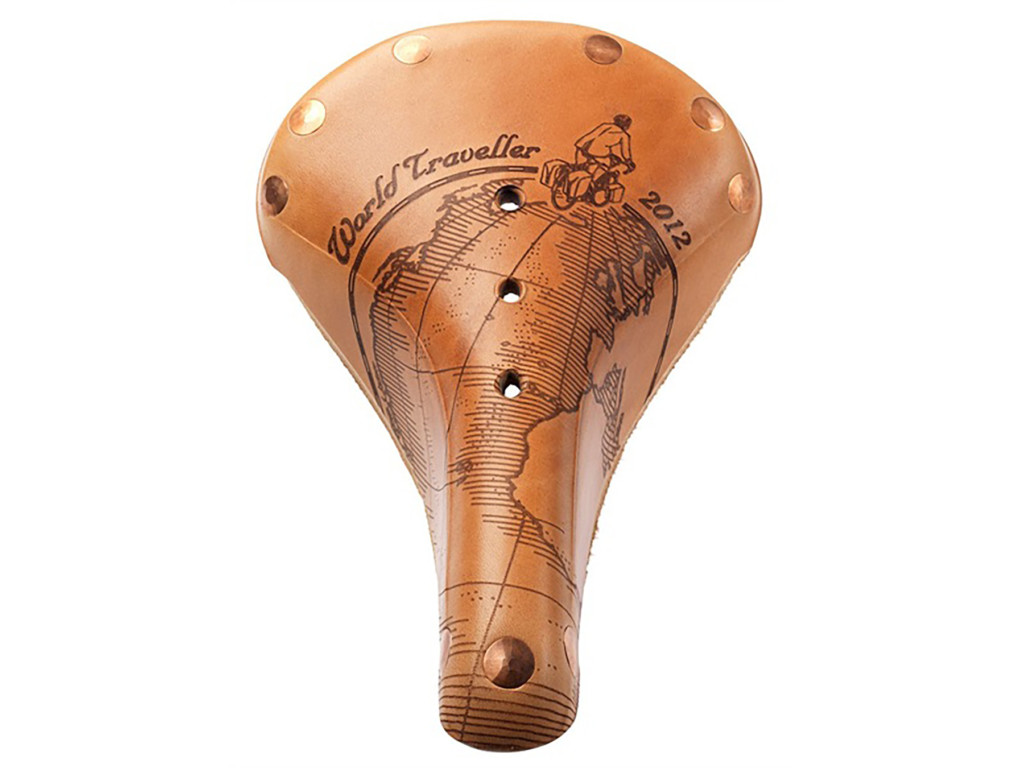
Everyone knows men like narrower saddles than women, and sporty types prefer harder lightweight saddles to the comfortable springier saddles utility types prefer. See, it’s all very simple in the end: You just need to know a few basic facts about yourself and your intentions to pick the right saddle for your next neighborhood outing. Or world travels. Brooks will take care of the rest, just as they have always done since 1883.
Paul Gander
Bill Laine
https://sites.google.com/view/cyclehistory
http://www.luxurylondon.co.uk/article/back-in-the-saddle-brooks-england
http://brooksarchives.info/brooks/index.html
http://pedaling.org/brooks-brand.html
http://www.classiclightweights.co.uk/designs/brooks-hs.html
http://bikeretrogrouch.blogspot.com/2013/11/brooks-saddles.html
http://www.oldbike.eu/museum/saddles/
http://www.kurtkaminer.com/brooksbadges.html
http://www.ctc.org.uk/about-ctc/history/ctc-history-timeline
[…] “Climax” model from the 1890’s) but actually there is a fantastic piece over on Ebykr which frankly does a better job and is absolutely worth a read, ideally with a nice cup of […]
[…] Brooks England: The Eternal One […]